19+ Ways To Make Your Sailboat Faster? Increase Boat Speed
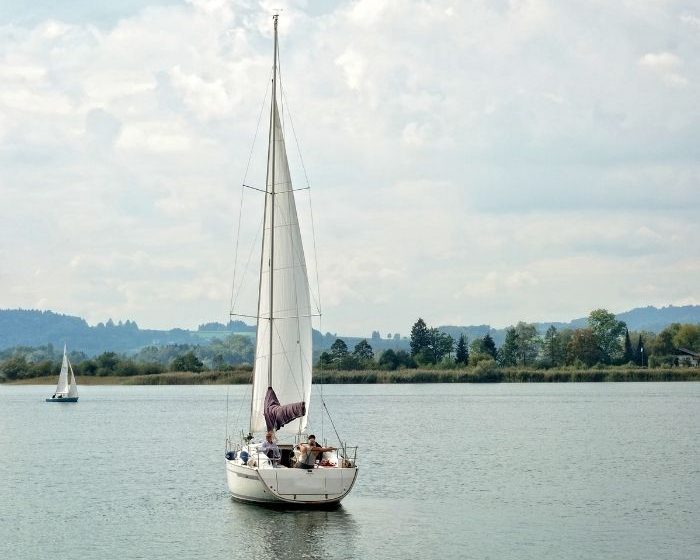
More speed means more fun, and more time and places to explore. Whether for racing or normal sailing. Increasing the sailboat speed and making the sailboat faster will take your experience to a higher level and make it much more filled with all the excitement and fun.
Well, I will share with you 19+ effective and proven ways that will increase your sailboat speed and make you sail faster. These tips are not all just for sailboats, you can apply what is appropriate to other boats such as fishing boats, catamarans, trimarans, yachts, and others.
Applying just one of them will not make a huge difference but when you apply several of them together you will notice a huge difference in the performance and speed of your sailboat.
This may not work for everyone, as there are differences in sailboat types, classes, and the limited changes you can make to the designs and the capabilities of each person. But despite that, you will surely find what suits your circumstances.
Without further ado let’s see how to increase your sailboat speed and make your sailing boat faster.

1. Get Rid Of Unnecessary Weight To Sail Faster
The lighter boat is faster than the heavier boat if they are similar in size and design.
You will struggle to outrun other boats if you use the maximum gross load of your boat, or increase the sailing boat speed during normal sailing.
In simple words, the sailboat is moved by the force of the wind, which constitutes two forces, pushing and lifting. More weight means more wind is needed to move it.
Since the invention of sailboats thousands of years ago; Weight is one of the most important factors affecting the speed of a sailboat.
Remove any unnecessary weight even if it is light in itself. When you combine them with other things, you may get rid of an unnecessary load. Thus your boat will practically become faster.
You can get rid of any things you are not going to use in your race or if you are on a normal sailing trip.
Some sailors even had to remove doors, lockers, mattresses, and pillows, and some even removed the toilet and left it on the dock. What the $$$$?
Next, I will give some ideas about things you can get rid of to make your boat lighter and faster.
2. Empty The Tanks, Water, Fuel, And Holding Tank
50 gallons of water, 50 gallons of fuel plus the holding tank, that’s more than 455 kilograms (1000 pounds) of extra weight that can be removed.
Don’t wonder why your boat is slow if your tanks are always full.
If you are in a race, take only what you need, water and fuel, without extra.
Nobody is going to take a shower during the race I think. And you don’t need 50 gallons of fuel to get back to the dock.
If you are on a normal sailing trip, take 20% more than you need for water and fuel, in case something unexpected happens on your voyage or you change your plans. Pump out the holding tank frequently and keep it clean of sludge.
Read more about how to clean the holding tank .
3. Rearrange The Boat And Your Belongings
If you are racing remove anything that was not necessary for your race. This includes but is not limited to; extra clothing, food, and water bottles, and removing things like cockpit grills, seat cushions, and heavy items and leaving them on the dock.
There are some things that should be kept onboard like life jackets, flares, fire extinguishers, etc.
For normal sailing, go through the boat and threw away anything that was not useful for your trip. Anything that was not going to be used or make you happy while you are sailing should be removed from the boat.
Another thing to consider is the dinghy.
If you are racing I assume that you will not take your dinghy with you during the race and that you will leave it on the dock. You know that, don’t you?
For everyday sailing, considering a lightweight dinghy is the best choice. Lighter means less weight to carry around, thus increasing the sailboat speed.
This will not only make the sailboat faster but provide comfort and speed for the crew to work effectively.
4. Upgrade To Lighter Options When Doing Repairs
When doing maintenance and repairs, consider the weight of the parts. Choose lighter parts, for example, upgrade fittings and bolts to titanium instead of steel.
It is not necessary to rebuild the boat from scratch, a few pieces at a time, and with time your boat will become lighter and more durable.
In short, under the same applied force (the wind), the lighter the boat, the faster it accelerates and reaches a higher speed.
When you apply the above instructions, you will be amazed about how much unnecessary weight you carry slowing your sailboat down. In some cases, it may reach more than 2000 kg.
5. Weight Distribution And Balancing The Boat
Another important factor is the weight distribution inside the boat. If the boat is unbalanced, this affects the acceleration and speed of the boat significantly.
In calm weather, drop the sails and watch the boat’s heeling degree , if you feel your boat is leaning a bit much or wants to tip over, you’re probably too heavy on one side.
There are several things related to the essence of this matter, such as Center of Gravity (CG), Center of Pressure (COP), and Center of Mass (COM). This may not be an option available to everyone, but if you distribute the weight evenly on each side, you will be fine.
Another option you may consider is, that if you were to balance the boat on its keel, you would find that it weighs less than if it was weighted equally throughout the length of the hull.
For everyday sailing, the supplies should be stored as low as possible with weight well distributed. Secure the equipment to the boat to keep it from shifting.
6. Clean Your Boat’s Bottom Regularly
Cleaning the bottom of your boat is not only good for its appearance but also for its performance. A dirty bottom causes serious issues.
This can not only damage the hull of the boat, but it could slow it down too. If this happens, you may have to replace the entire bottom of the boat at some point.
You have to clean your boat’s bottom to prevent mold from forming, keep out algae that might form on your boat’s bottom and eventually eat away at your paint, and keep out insects that might crawl into your boat’s interior.
Also, to prevent saltwater from eroding the bottom of the boat. Saltwater corrodes fiberglass and aluminum boats faster than freshwater does.
Marine life (biofouling) built on the bottom of the boat will make it difficult for the boat to move through the water due to the resistance it creates.
When you clean your boat’s bottom, if it’s in good condition then that’s good. if not, clean out all the paint to the hull and re-paint with anti-fouling paint, then apply super-slick surface finishing.
A clean boat’s bottom will improve the sailboat’s speed a bit, but if it’s not clean will cause a lot more problems. Ensure to perform a regular bottom cleaning and your boat will be faster.
7. Ensure the bilge pump working properly
When the bilge pump fails, the water in the boat can build up and eventually overflow into the cabin area. This can cause serious problems like mold, rot, and others.
Plus, 1 liter of water equals 1 kg unnecessarily extra weight. This could slow your sailboat if the bilge pump fails or If it is slowed down than what it should be.
Ensure that the bilge pump is in very good working condition and with high efficiency.
8. More Sail Area Faster Sail Speed
More sails and lesser weight is the golden rule . More sails area means more wind harnessed. Means, faster sail speed. This is what makes the sailboats move faster.
The sails area is the total surface area of the sails that are attached to your boat. This is measured in square feet (ft²). A larger sail area means that you can use less wind power to move forward.
If you have a smaller sail area than what you need, then you will need to increase the size of your sails to make your sailboat faster.
This may not work for everybody for a variety of reasons (i.e boat design and budget), and may not work in all conditions i.e upwind.
Nevertheless, more sails area means you can either make the sails bigger or add more sails.
There are two types of sails: mainsail and jib sail. For a variety of reasons, one option may not suit everyone. But you got the idea, depending on your boat design’ and your budget you will do what works for you. Add more sail area.
Still, there are issues related to the sails other than the sails area that will increase the speed of the sailing boat, which we will discuss later on.
9. Get A Better Sail Plan To Increase Your Sailboat Speed
Sail plans are a graphical representation of how a boat’s rigging is arranged. They are used to describe the type of rig (i.e., gaff-rigged vs. fore-and-aft rigged), the number of masts, and the arrangement of those masts.
A sail plan can also include information about the shape of the hull, the location of the center of gravity, and other details. This information can help determine where the weight should be placed on the boat to achieve maximum performance.
There are some limitations to what you can do but you can certainly make it better to improve the speed of the boat.
I.e fit a more efficient rigging, tune your rigs, backstay adjuster, lighter/taller masts, and better sail control. Use new lighter, less stretchy sheets, and halyards. Add adjustable jib sheet cars, get a whisker pole, and a Cunningham. Still, there is so much you can do.
10. Get A Bowsprit
The bowsprit is a spar that extends from the bow of a ship. It is used to balance the weight of the masts and sails, and to provide stability while sailing.
Bow sprits are typically made of wood, although some modern designs use metal instead. And usually about two meters long. And it has some advantages:
- Allows you to use a bigger sail (added more sail area).
- To keep the foresails in place.
- To provide more stability to the sailboat.
- To provide additional structural integrity to the sailboat.
- To allow the crew to move freely along the deck without being hindered by the rigging.
If you want to increase your sailboat speed, a bowsprit will help with that.
11. Master To Maximize VMG
Velocity Made Good (VMG) is the speed at which your boat is moving relative to the wind. You can use this information to determine how much time you have to make a turn (Tacking) before you reach your destination.
If you are going straight ahead, you should have no problem reaching your destination. However, if you are sailing into the wind, you may need to tack back and forth until you reach your destination.
And here comes the need to master VMG to make your sailboat go faster. You must master this skill and use the modern equipment that will help you to maximize VMG and sail faster.
Here is a helpful video about VMG.
12. Ensure The Rudder Is Deep Enough To Steer & Control
The rudder is the part of the boat that controls its direction. If your rudder is too small, then you won’t have much control over where you are going. On the other hand, if your rudder is too big, then you’ll end up getting stuck in the mud or hitting rocks.
The bigger your rudder, the easier it will be to steer your boat. This is true for all boats. A larger rudder allows for greater control over the direction of movement. If you have a small rudder, you may find yourself constantly having to correct your course.
Rudder depth refers to how deep into the water the rudder blade extends. A deeper rudder blade allows for greater control over the sailboat.
This way, you can always move forward without losing control of the sailboat. The better the control the faster the sailboat will be.
13. Consider A Better Keel
This option may not be suitable for everyone because it requires making reconditioning and adjustments that need time and budget, but It is worth mentioning.
A better keel is not always heavier or deeper: there are other factors that determine what is the best, such as the sailboat design, the main purpose, the overall weight, etc.
But if you dig deeper into it and take the specialists’ opinion, you may find that there are better options for your sailboat keel’, which will make your boat faster.
There is no suitable option for everyone. As a general rule, a deeper and heavier keel is better.
You can read more here about sailboat keels.
14. Consider A Folding Or Feathering Propeller
When the engine is running, the propeller is what drives the boat. When sailing, the propeller creates more water resistance and drag, which means it slows the boat down.
A great way to reduce resistance and drag is by using a folding or feathering propeller.
A folding propeller can be used to help reduce resistance while using the sails to move the boat. This type of propeller has blades that fold together when not in use to reduce resistance and increase efficiency.
Feathering propellers are similar to folded propellers except that they have a feathering blade design; the blades extend outwards instead of folding inwards. This allows them to reduce resistance and drag.
Less drag and resistance means faster sailing and better performance.
15. Take Care Of Your Deck Gear
The deck gear, equipment, and fitting are the essence of any good sailboat. There are many things that can go wrong with your deck gear, but if you know how to properly service them, they should last you a lifetime.
These items are not only necessary for keeping your sailboat sailing, but they can also help increase your sailboat speed and prevent future failure from occurring.
Without proper service and maintenance, your deck gear can become worn out and cause damage or failure to your sailboat and slows you down. Make sure that your sailboat deck gear is well maintained and ready for action.
Making your sailing boat go faster is not all just about the sailboat. Good skills and techniques are also key.
16. Improve Your Sail Trimming Skills At All Sailing Points
The best way to learn to trim your sails is to practice. Practice trimming your sails at different angles and speeds.
You should always have a good understanding of what each point of the sail does before you start trimming.
If you are not sure what each point of sail is doing, then it is time to consolidate experience and knowledge of the situation.
Know-how and when to gybe, tack, reef, etc. It is the heart of sailing.
Once you know what each point of sail means, and how you should approach it, you’ll be able to make adjustments accordingly. You will hone your skills, become better and thus sail faster.
17. Ensure To Avoid Much Or Little Weather Helm And Lee Helm
Another important skill every sailor should have is to know how to handle weather helm and lee helm. Too much is bad, too little not enough.
Weather helm is the term used to describe the effect that wind has on the sailboat. It is the tendency of a sailboat to turn towards the direction of the wind, making the helm unbalanced and pulling the tiller to the wind direction (facing the wind).
Lee helm is the opposite of weather helm. It is the tendency of a sailboat to turn far from the wind direction, (wind blowing from the back of the sailboat). Which also makes the helm unbalanced and affects the speed of the sailboat.
You can read more here and here .
18. Race Against Yourself And Compare Results
When you race yourself, you get to see what kind of improvements you’ve made over time and what are your weaknesses. Racing against yourself helps you improve faster.
You’ll notice that you make changes to your boat that you didn’t think about before. These changes will allow you to perform better and make your sailboat faster.
19. Race Against Similar Sailboats And See How You Perform
Racing against similar sailboats is a great way to compare your performance and your boat’ to other boats. This can help you determine if your boat is performing better than others.
You should always try to beat the same boat that you are racing against. If you don’t, then you won’t know how well you’re doing.
This method is used to compare the performance of two different boats. When comparing boats, it is best to be similar boats.
This means that they have the same hull shape, size, sails, and weight. Many factors affect the performance of a boat, but these are the most common ones.
20. Sail In Different Boats And Develop Your Knowledge
This is a great way to increase your experience and knowledge about sailing. Different boats mean different sailors and different skills and tactics may be new to you. Sailing is an ongoing learning process, and this is one of the best ways to learn more.
Developing your knowledge and honing your skills is the ultimate thing to do to sail faster.
I hope you found this article helpful, if you did, please bookmark this page and share it with your friends and help someone else.
Boat Pursuits
How to make your sailboat faster (tricks and tips).

For those who have ever dreamed of sailing on their own boat, having it move as fast as possible is a great goal to achieve.
But how can you make your sailboat faster? Well, if you’re looking for tricks and tips to make your vessel zip through the waves, you’ve come to the right place.
In this article, we will discuss how to modify the hull shape for improved hydrodynamics, use lighter materials, adjust the sail shape and rigging, reduce drag on the hull, optimize the sail trim, utilize the right sail for the prevailing conditions, and make simple modifications for increased speed.
Read on to learn how you can make your sailboat faster!
Table of Contents
Short Answer
To make a sailboat faster, there are a few things you can do.
First, make sure your sails are set correctly and trimmed properly.
This will help the sails catch more wind.
Second, reducing the weight of the boat by removing any unnecessary items will help it move faster.
Finally, make sure your boat is well maintained and the propulsion system is in good working order.
These steps should help you make your sailboat faster.
Modifying the Hull Shape for Improved Hydrodynamics
Making a sailboat faster can be achieved by modifying the hull shape for improved hydrodynamics.
By changing the shape of the hull, the boat will cut through the water more efficiently, creating less drag and enabling faster speeds.
The most common modifications for improved hydrodynamics include removing the keel, or adding a fin or bulb keel to the bottom of the boat, reducing the wetted surface area of the hull, and adding a foil or appendage to the hull.
Removing the keel is a popular option for sailboats that are not designed for racing, as it significantly reduces drag and increases speed.
A fin keel is a deeper and heavier keel that provides greater stability and better performance, while a bulb keel is a shallower and lighter keel that is designed to increase speed and reduce drag.
Reducing the wetted surface area of the hull can also be done by adding chines or strakes to the sides of the boat, which can help reduce drag and increase speed.
Lastly, adding a foil or appendage to the hull can help improve lift and reduce drag, resulting in improved speed.
It is important to remember that modifying the hull shape for improved hydrodynamics can be a complicated and expensive process, and should only be done by experienced professionals.
Additionally, it is important to consider the boats intended use when making modifications, as some modifications may negatively impact performance in certain conditions.
With careful consideration and professional advice, sailors can make the necessary modifications to their sailboats to improve speed and performance.
Using Lighter Materials

One of the most effective ways to make a sailboat faster is to use lighter materials.
By using lighter materials, the boat will be able to move more quickly through the water.
This can be done by replacing heavy components such as the hull and mast with lighter materials.
Additionally, the sails and rigging should be made of a lightweight material such as carbon fiber.
This will reduce the weight of the boat, allowing it to move faster.
Using lighter materials can also reduce drag, resulting in even more speed.
This is especially true when sailing in light winds, where the boat needs to be as light and aerodynamic as possible.
Adjusting the Sail Shape and Rigging
Adjusting the sail shape and rigging is an essential way to make a sailboat faster.
Sail shape and rigging can have a major impact on a sailboats speed.
By making small adjustments to the sail shape and rigging, such as increasing the sail area, changing the angle of attack, or adjusting the sail twist, sailors can increase the speed of their boat.
In terms of sail shape, its important to make sure that the sail is full and aerodynamic.
When adjusting the sail shape, sailors should focus on ensuring that the sail is pulled in tight, and that the luff of the sail is parallel to the centerline of the boat.
These adjustments will help to maximize the sails power and efficiency.
When it comes to rigging, sailors should pay attention to the mast and boom.
Sailors should make sure that the mast is straight and that the boom is at the correct angle.
This will help to ensure that the sail is properly set, and that the sail is receiving the most power possible.
Additionally, sailors should make sure that the sail is properly balanced and that the sail is adjusted for the prevailing conditions.
By making small adjustments to the sail shape and rigging, sailors can make their sailboat faster and more efficient.
With some practice and patience, sailors can optimize their sailboats performance and make their sailboat sail faster than ever before.
Reducing Drag on the Hull

Making your sailboat faster is an important objective for many sailors, and reducing drag on the hull is one way to achieve this.
Drag is caused by the friction between the water and the hull, and reducing this friction will increase the speed of the boat.
One way to reduce drag is by using an efficient bottom paint .
This paint creates a smooth surface that reduces the friction of the water on the hull, allowing the boat to move more quickly.
Additionally, keeping the hull clean and free from any too barnacles and algae will help to minimize drag.
It is also important to make sure that the hull is properly waxed to maintain a smooth finish.
Another way to reduce drag is to optimize the sail trim.
Sailors should ensure that the sails are set to the appropriate angle to maximize aerodynamic lift, as this will reduce the drag on the hull.
Additionally, sailors should make sure that they are using the ideal sail for the prevailing conditions.
Choosing the right sail for the wind speed and direction can make a big difference in the speed of the boat, as different sails are designed to be more efficient in certain conditions.
By taking the time to reduce drag on the hull, sailors can make their sailboats faster and more efficient.
With some simple modifications and careful sailing, sailors can make their sailboats sail faster and more efficiently.
Optimizing the Sail Trim
Optimizing the sail trim is an important step to making your sailboat faster.
Proper sail trim ensures that the sails are positioned correctly to take advantage of the winds power and direction.
To get the most out of your sailboats performance, you should adjust the sails according to the wind and sea conditions.
When the wind is light, the sails should be trimmed in more closely and the sailboat should be sailed closer to the wind.
This will help reduce drag and improve the boats speed.
When the wind is stronger, the sails should be eased out to capture more of the winds power, while still ensuring that the boat is stable and balanced.
Additionally, the traveler should be adjusted as the wind shifts so that the sails remain properly balanced.
It is also important to adjust the angle of the sails to the wind.
This is known as heading and is affected by the wind speed and direction.
The more you angle the sails into the wind, the slower the boat will go.
Conversely, the less you angle the sails into the wind, the faster the boat will go.
Finally, the shape of the sails should be adjusted according to the wind.
In light winds, a flatter sail will help reduce drag and create a more efficient sail shape.
In stronger winds, a fuller sail will help capture more of the winds power.
A good rule of thumb is to adjust the sail shape so that the upper part of the sail is full and the lower part of the sail is flatter.
By optimizing the sail trim, sailors can improve the speed of their sailboat and make their sailing experience more enjoyable.
With practice, sailors can become better at optimizing the sail trim and be rewarded with increased speed and performance.
Utilizing the Right Sail for the Prevailing Conditions

For sailors looking to make their sailboat faster, one of the most important steps is to ensure they are using the right sail for the prevailing conditions.
The type of sail used can make a significant difference in the speed of the boat, and choosing the correct sail for the current conditions can provide a significant performance increase.
When selecting the right sail for the prevailing conditions, sailors should consider the wind speed and direction, the shape of the sail, and the size of the boat.
Different sails are designed for different wind speeds, so its important to choose a sail that is appropriate for the current wind conditions.
Additionally, the shape of the sail should be considered in order to maximize the boats speed.
For example, the shape of a genoa sail is designed to provide more power at lower wind speeds, while a spinnaker is designed to provide more power in higher winds.
Finally, the size of the boat should be taken into account when selecting the right sail.
A sail that is too large for the boat can cause the boat to be slower and less responsive, while a sail that is too small will not provide enough power.
In addition to choosing the right sail for the conditions, sailors should also consider the sail trim.
Sail trim involves adjusting the sail shape to ensure that the sail is at the correct angle to the wind.
This is an important step in maximizing the boats speed, as improper sail trim can reduce the boats speed significantly.
Sail trim can be adjusted by changing the sails shape, angle, and tension in order to make sure the sail is optimized for the current wind conditions.
By selecting the right sail for the prevailing conditions and optimizing the sail trim, sailors can significantly increase the speed of their sailboat.
With these simple modifications, sailors can make their sailboat sail faster and more efficiently.
Simple Modifications for Increased Speed
Making your sailboat faster doesn’t have to be a difficult and expensive process.
There are several simple modifications that can be made to your boat that will help increase speed and efficiency.
The first step is to modify the hull shape for improved hydrodynamics.
This can be done by reducing the wetted surface area of the hull and improving the angle of the bow and stern.
These modifications help reduce drag and increase speed.
Another way to make your sailboat faster is to use lighter materials.
This includes replacing heavier components such as the mast, boom, and rudder with lighter alternatives.
Reducing the overall weight of the boat can help increase speed and efficiency.
Adjusting the sail shape and rigging is also essential for increasing speed.
The shape and angle of the sail can be modified to more effectively catch the wind.
Additionally, the rigging can be adjusted to optimize the sail trim.
This will help to maximize the power of the wind and push the boat forward.
Reducing drag on the hull is also important for increasing speed.
An efficient bottom paint can help to reduce drag and increase speed.
Additionally, keeping the hull clean and free of marine growth will help to further reduce drag.
Finally, it’s important to choose the right sail for the prevailing conditions.
Different sails are designed for different wind speeds, and using the right sail can help to maximize the power of the wind.
Additionally, it’s important to optimize the sail trim and adjust the rigging accordingly.
With some careful sailing, sailors can make their sailboats sail faster and more efficiently.
Final Thoughts
Making your sailboat faster doesn’t have to be an impossible task.
By following the simple tricks and tips outlined here, you can make your sailboat faster, more efficient, and more enjoyable to sail.
From modifying the hull shape for improved hydrodynamics to utilizing the right sail for the prevailing conditions, you can make your sailboat faster and more enjoyable to sail.
So, take the time to make these modifications and adjustments, and youll be sure to sail faster and more efficiently.
James Frami
At the age of 15, he and four other friends from his neighborhood constructed their first boat. He has been sailing for almost 30 years and has a wealth of knowledge that he wants to share with others.
Recent Posts
When Was Banana Boat Song Released? (HISTORICAL INSIGHTS)
The "Banana Boat Song" was released in 1956 by Harry Belafonte. This calypso-style song, also known as "Day-O," became a huge hit and remains popular to this day for its catchy tune and upbeat...
How to Make Banana Boat Smoothie King? (DELICIOUS RECIPE REVEALED)
To make a Banana Boat Smoothie King smoothie at home, start by gathering the ingredients: a ripe banana, peanut butter, chocolate protein powder, almond milk, and ice. Blend the banana, a scoop of...
Sailing Fast: 11 Tips to Get You Up to Speed
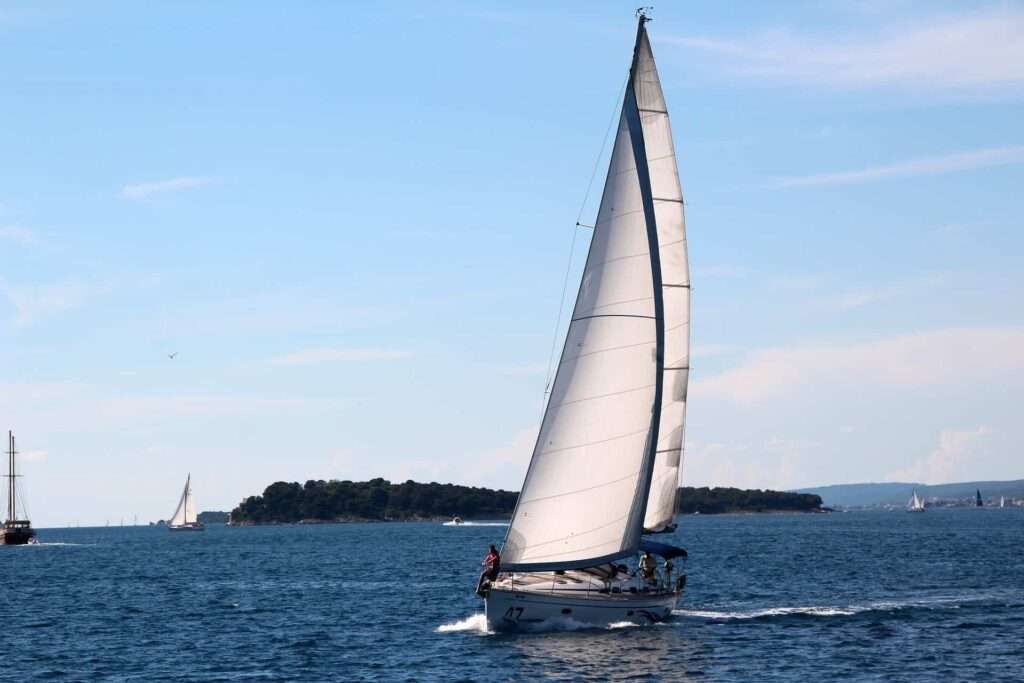
Sailing speed is determined by many factors, including sails, the size and weight of your boat, and the knowledge of sailing you have. A good rule of thumb is to sail upon the reach if you want to sail fast, which means sailing across the wind with your sails pointed 45-90 degrees from the wind.
Table of Contents
Use the right sails
Sailing fast requires a sailor to choose the right sails for the conditions. Different sails work better depending on the wind direction and speed.
When sailing upwind, a longer sail is usually used to generate more power and speed. This type of sail will catch the wind and produce ripples in the sail’s fabric. On the other hand, when sailing downwind, a shorter sail should be used, which will allow the boat to reach higher velocities.
When trimming your sails, it is important to note how the shape of the sail changes as the wind increases. As the wind grows stronger, the sails need to be adjusted accordingly. This can help reduce drag and keep the boat traveling faster.
It is also important to make sure that your sails are not too big for your boat. An overloaded boat will move slower and require more energy from the sailor.
Finally, once you have your sails set up correctly, remember to enjoy the ride! Feel the wind on your face and watch the waves pass by as you cruise through the water at higher speeds.
Sailing fast can be an exhilarating experience and with the right knowledge and preparation, you’ll be back at the dock before you know it.
Trim your sails
One of the most important steps to sailing fast is trimming your sails. This involves adjusting the sails so that they are properly angled against the wind and provide the most power to your boat.
To trim your sails, you need to know how to tie knots. Knowing how to tie knots is an essential skill for a sailor, and there are several useful knots for trimming your sails.
One of the most commonly used knots is the Bowline Knot, which creates a secure loop that won’t slip or come undone. Another useful knot is the Cleat Hitch, which helps secure the sail to the boom.
Finally, the Clove Hitch Knot can be used to temporarily hold the sail in place while adjusting it. With practice, you’ll become adept at tying these knots and will be able to quickly and efficiently trim your sails for maximum speed.
Heel the boat
Heeling the boat is an essential technique for getting up to speed when sailing. Heeling is when you tilt the boat from side to side in order to increase speed and gain an advantage over other vessels.
To heel the boat, use your rudder to turn the boat into the wind. This will cause the wind to blow across the sail and push it in the direction you want to go. The more you heel the boat, the more speed you will gain.
Be sure to check the wind direction before attempting to heel the boat, as it can quickly become dangerous if not done properly. Additionally, you should also pay attention to any waves that may be present, as they can cause your boat to roll and slow you down.
With practice, you can use heeling to your advantage and become a faster sailor.
Use the wind
One of the most important tips for sailing fast is to use the wind to your advantage. The direction and strength of the wind can affect how quickly you travel, so it’s important to pay attention to the conditions.
When sailing, make sure to pay attention to which direction the wind is coming from. This will help you determine which side of the boat is best for your sail placement, as well as what type of sail is needed. Make sure to adjust your sails according to the direction and strength of the wind.
In addition to adjusting your sails, be mindful of how much power your boat is getting from the wind. Be aware of gusts that can come quickly and can make your boat heel too much. If necessary, you can always let out more sail or reef in order to reduce the power.
Finally, make sure to use any lulls in the wind to your advantage. While this may not be ideal for speed sailing, you can use these periods of no wind to practice different tacks and gybes or to take a break from sailing.
Sailing on a reach is the fastest
Sailing on a reach is one of the fastest ways to travel by sailboat. It involves sailing across the wind so that the sails are neither running directly into the wind nor with it. This puts the sails in an optimal position to take advantage of the wind’s energy.
When sailing on a reach, the sails will be angled between 45 and 90 degrees relative to the wind. This means that your boat is moving more quickly than when it’s sailing upwind, but less quickly than when it’s running downwind. This technique is often used in races and long-distance trips, as it can provide both speed and stability.
In order to sail on a reach, you need to have good control of your boat and understand how to use the wind properly. Make sure that your sails are trimmed correctly and that you’re heeling the boat the right amount. You should also try to keep your boat on a steady course, as changing direction can decrease your speed.
Sailing on a reach is often used when there’s a lot of wind, as this helps to reduce the power of the gusts and makes it easier to stay in control. If you’re comfortable sailing on a reach, it can be a great way to get from point A to point B quickly and safely.
Speed impact by waves
When it comes to sailing, the waves can make all the difference in terms of speed and performance. By utilizing the right kind of wave, you can significantly increase your boat’s speed.
When sailing in head seas, your boat will be pushed forward by the waves. This is because the boat is moving in the same direction as the waves, giving it a boost in speed. However, when sailing in following seas, the boat is moving against the wave, causing resistance and slowing the boat down.
To take advantage of the waves to gain speed, try to keep the boat at an angle that allows the wave to push the boat forward while still keeping control of the helm.
In addition, the size and shape of the waves can also make a big difference in speed. Larger waves can provide more lift and create faster speeds, while smaller, choppier waves can slow the boat down. Knowing how to read the waves and adjust your angle accordingly will help you find the fastest path to your destination.
Finally, sailing in downwind conditions can provide significant speed boosts if done correctly. By taking advantage of the wind shadow created by larger boats or structures, you can find yourself surfing along large waves and gaining speed very quickly. Be sure to use caution when sailing in these conditions, as downwind sailing can be quite unpredictable.
Dark water more wind
One of the most effective ways to get your boat moving faster is to sail on dark water.
Dark water is essentially water that is deeper and therefore absorbs more of the sun’s heat. This results in warmer temperatures and more wind. In fact, when sailing on dark water, you can expect to see a significant increase in wind speed.
So what exactly is dark water? It is simply water that is darker than the surrounding area. Typically, it will appear as a black or deep blue color when viewed from above. This is because the deeper water absorbs more of the sun’s energy and thus produces more wind.
When it comes to sailing faster, taking advantage of the increased wind speeds created by dark water is key. If you are in an area with both dark and light water, try to steer towards the darker areas whenever possible. This will ensure that you get maximum wind speeds and make for a much faster sailing experience.
Wind shift influence speed
Wind shifts can have a big influence on your speed when sailing. When the wind changes direction, your boat will be pushed off course, and you will lose speed. To counteract this, you should adjust the sails accordingly.
When the wind shifts, you should move the sails around to face the same direction as the wind, so that the boat can still be pushed in the same direction. This will help keep your boat on course, and you will be able to maximize your speed.
Additionally, you should adjust the sails to account for any change in the force of the wind. If the wind is stronger, you may need to ease the sails to avoid over-pressuring them. In this way, you can take full advantage of any wind shift, and get the maximum performance out of your boat.
Some boats are faster
When it comes to sailing, some boats are definitely faster than others. The type of boat you use can make a big difference in your speed.
Larger sailboats tend to be slower, while smaller boats are often more maneuverable and faster. To get the most out of your boat, make sure you understand its capabilities and limitations.
The shape of the hull, keel, and rudder also have an impact on speed. A modern boat will generally be more efficient than an older design due to advances in construction methods. Additionally, boats with lighter materials are typically faster than those constructed with heavier materials. This can make a big difference when competing in a regatta.
In addition, certain types of boats are naturally faster than others. Racing dinghies and skiffs are designed for speed and agility and are often the fastest choice when you need to move quickly.
Multihulls such as catamarans and trimarans also provide superior speed, although they may not be as easy to handle as a single-hulled sailboat.
Finally, the right sails can make a big difference in your speed. Using the right type of sail for the prevailing conditions can help you move faster and gain a competitive edge in a race. You can also use sails made from lightweight materials for increased speed. With some knowledge and skill, you can make sure your boat is as fast as possible.
Use the tides
Tides can be a powerful force that can affect the speed of your sailboat. Knowing how to use the tide to your advantage can give you an edge when racing or cruising.
When the tide is coming in, it creates a current that will push your boat forward. Taking advantage of this natural force can help you gain extra speed and reach your destination more quickly. The same is true when the tide is going out; using the current can help you reduce drag and move faster.
It’s important to pay attention to the timing of the tides so that you can plan your route accordingly. Check out tide charts for your area and use them to determine when it would be most advantageous to sail in certain directions or areas.
In addition, be aware of tidal streams, which are powerful currents that flow at different times of the day. They can create strong eddies or swirls, so keep an eye on your surroundings when sailing in these conditions. Knowing the direction and strength of the tidal streams can help you make more informed decisions about your course and speed.
Use the current
When sailing, it is important to take advantage of the current. Currents help to push a boat along and can provide an additional boost of speed.
To make the most of the current, sailors should look for areas of stronger flow and use them to their advantage. Depending on the direction of the current, sailors can either tack or jibe to maximize the effect.
The current can also be used to counteract wind shifts. If there is a wind shift while sailing, the current can be used to stay on course. This works especially well in tidal waters where the current will push against the wind and can help you stay on course even when the wind is not favorable.
In order to make the most of the current, sailors should keep an eye out for currents that are running at different speeds. They should also be aware of any changes in direction and use them to their advantage. By using the current, sailors can significantly improve their speed and reduce the amount of time spent tacking and jibing in order to stay on course.
Enjoy the ride
Practice makes perfect, the more you sail the better sailor you are. Sailing is not just about reaching a destination; it’s also about enjoying the journey.
When you’re sailing fast, it’s easy to get caught up in the speed and the thrill of it all, but don’t forget to take time to appreciate the beauty of your surroundings and savor the experience.
It can be incredibly peaceful out on the water, especially when you’re cruising along with just the wind in your sails. Listen to the sound of the water lapping against the hull and take in the fresh sea air.
Sailing is a great way to enjoy some well-deserved relaxation and disconnect from the hustle and bustle of everyday life. So, as you sail fast, don’t forget to pause and enjoy the ride!
You might also like to read the below-related articles
Wind And Waves- How They Affect You As A Boater
Are You Ready To Ace The State Boating Exam?
Leisure Sailing vs Sport Sailing: 9 Questions Answered
What are the best conditions for sailing? (Explained)
Offshore Boat: 7 Beginner’s Questions(Answered)
Buy A Boat Vs Charter A Boat Vs Fractional Ownership
What Are The Best Conditions For Sailing? (Explained)

SAILING FASTER WITH OUR VALUABLE STRATEGY & TACTICS
Sailing faster is vital to win races and stay ahead of your opponents. But keeping up your speed and sail as fast as you can is easier said than done. That´s why our sailing experts and award-winning champions share their secrets with you on this page. You will discover how to sail your boat as fast as possible, but also learn about the wind, strategy and tactics that make you sail faster.
Go to overview >
LEARN FROM THE BEST SAILORS IN THE WORLD
Sailing faster than the wind – is that possible.
The top speed of a boat – and how fast it can go – is dependent on a lot of factors. If you use the right tactics under the right conditions sailing faster than the wind is possible. Techniques like foiling are a making sure that you sail your boat as fast as possible by conserving energy that the wind produces. By taking advantage of both true and apparent wind and using the right sailing techniques you will be able to sail faster than the wind.
SAILING FAST AS THE OBVIOUS, BUT DIFFICULT, WAY OF WINNING RACES
Be the fastest and you win the race. Sounds pretty straightforward, right? But as mentioned before, it´s not so easy to be the fastest sailor on the water as the conditions during a race are never the same. Sailing faster is all about choosing the right strategy and using the best tactics for the conditions you are sailing in. Our webinar with Australian champion Nathan Outteridge will teach you about upwind performance as a key to sailing better and faster. Watch the webinar preview now or subscribe to watch the full episode in our ´Sail Better series´.
We selected some good reads for you

SAILING UPWIND
The more you sail, the better you’ll understand the huge effect that different wind speeds have on sailing. The difference between really light winds and strong winds is enormous. At low wind speeds, it’s a game of chess, trying to spot the best wind from the patches of darkness on the water, moving gently around the boat so that you don’t disturb the boat’s momentum. At high wind speeds over 20 knots, it’s a battle against the elements, where physical courage and determination come into play.
Learn More >

Sailing race
The first time you take part in a sailing race can feel like an overwhelming challenge. Even if you’ve already mastered the basics of sailing, the presence of other boats on the race course can feel intimidating. It doesn’t have to be that way, as sailing journalist Andy Rice explains…
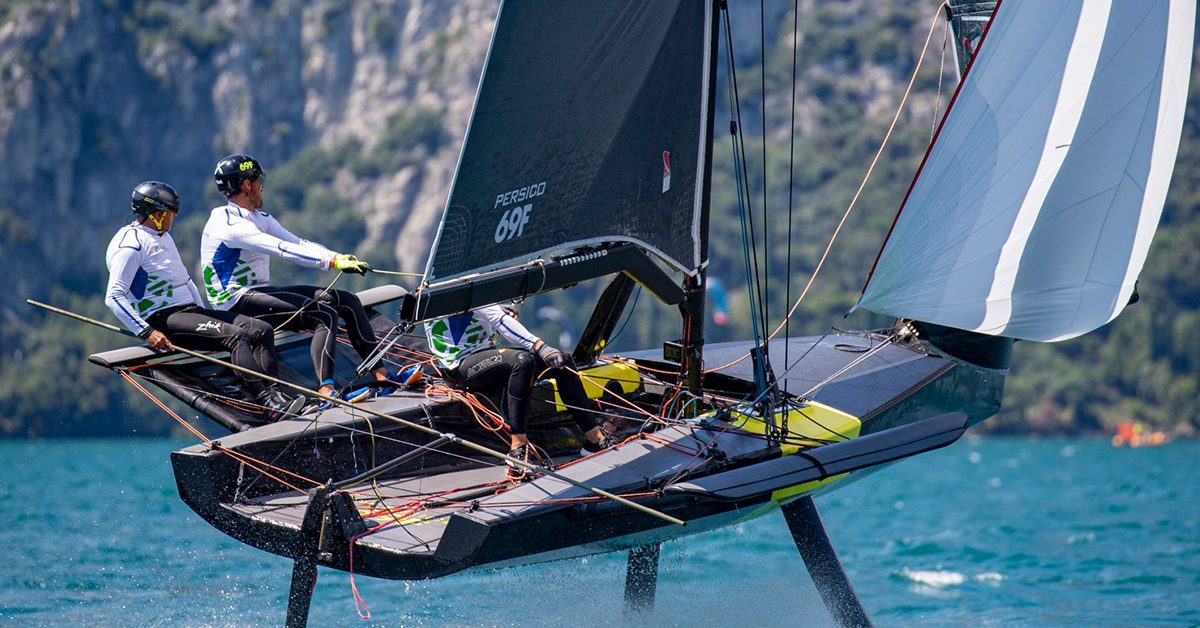
SAILING TRAINING
So in this article, we’re going to look at ways of creating a structured training programme that will bring you focus, fulfillment, and better results on the race course. And we’ll show you how to have fun doing your sailing training too!
HOW TO WIN A SAILING RACE?
In order to win your next race it is wise to gather knowledge about crucial parts of the race. This includes preparation as well. A good start, effective training, defining the right strategy and tactics before the race starts are just as important as the race itself. Therefor we made up these great resources, like webinars and articles written by pro´s and experts, that will help you to win your next sailing race. Stay up to date with the latstest content by subscribing to our newsletter.
- AROUND THE SAILING WORLD
- BOAT OF THE YEAR
- Email Newsletters
- America’s Cup
- St. Petersburg
- Caribbean Championship
- Boating Safety
- Ultimate Boating Giveaway

The Path to Consistent Boatspeed
- By Maggie Shea
- December 5, 2023
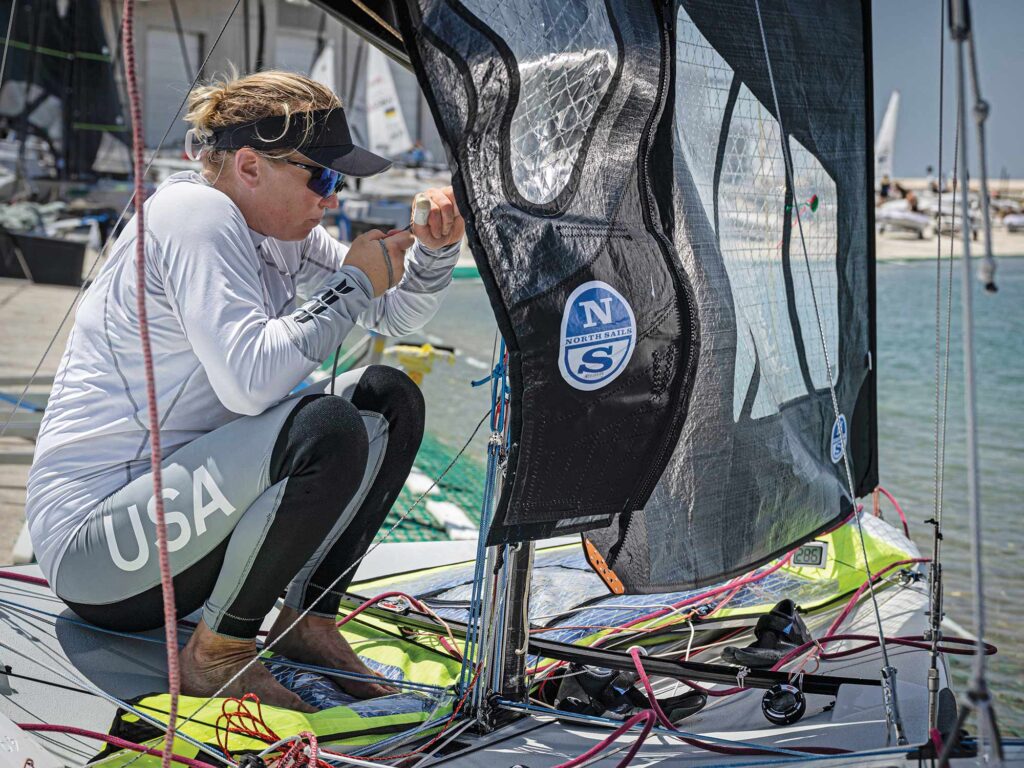
When boatspeed comes up in a debrief with your team, ask yourself: Did we put ourselves in a position to be fast on the racecourse? If the answer is no, do not waste your time on the topic. A few things have to be good enough before you leave the dock. Will your sails and hull allow you to be competitive? Is your team close to the overall target weight? The best sailors can make slow boats and old sails go fast, but for most of us mere mortals, it’s much harder with bad gear.
There are a few more caveats on the racecourse. If your upwind lane is compromised, you cannot evaluate your boatspeed. Even the fastest sailors in the fleet cannot defy the physics of being on another boat’s windward hip. Instead, they are usually better at tacking away before too much distance is lost. Also, a boat can be optimally set up, but improperly trimmed sheets or an erratic hand on the tiller will make it perform like it’s towing a clump of weeds.
All this is to say it’s critical that you make sure your team is doing the big things well—getting off the starting line, choosing smart moments to tack, and executing reasonable trimming and driving technique—before blaming boatspeed.
Aside from boat-specific equipment optimization, any speed-related problem-solving on board requires solid communication between the skippers and trimmers. The words we use matter; onboard communication related to speed should be concise, direct and actionable. On board the 49erFX, for example, my teammate Stephanie Roble will often tell me the “boat won’t release” when a puff hits. When I hear this, I know we need more twist in the mainsail. Here, Steph is giving me feedback that I can act on and address. When using adjectives to describe the boat’s performance, make sure you’re all on the same page about the meaning of terms such as “sticky,” “wobbly” or “narrow groove.” Ultimately, if the boat is set up properly, speed-related communication should be mellow. A quiet boat is a fast boat.
The tiller gives us some of the most valuable onboard feedback about the setup of the mainsail and jib in relation to each other. When sailing upwind with the sheets fully trimmed and the crew hiking appropriately, have the skipper release their grip on the tiller and take note of what happens to the bow. If there is a strong reaction to leeward or windward, you might have an imbalance in the setup of the mainsail and jib. If the bow gets pulled too leeward, away from the wind, it can indicate that your jib is too powerful or the mainsail could take more leech load. The opposite might be true if the boat wants to naturally round up when the skipper eases their grip on the tiller. If so, your mainsail might be too powerful. On most dinghies, the helm will not ever be totally neutral, but an extreme windward or leeward helm tug indicates you can find a better balance between the mainsail and jib. To keep things really simple, sometimes I ask Steph, “Are you pushing or pulling the helm?”
When you sail upwind to check settings, ensure the skipper and trimmer are aligned on wind strength and where it leaves you in the power curve. Are you searching for power, trying to use the max power available, or needing to depower your setup? The answer usually varies across the day’s wind conditions, such as: “Overpowered in the puffs, but OK on average.” This analysis should lead you to the next decision about whether you set up for the puffs or lulls. The sea state will influence which way you hedge. In flat water, you can feather into the wind when a puff hits to depower more easily. In a wavy sea state, you have to drive around the waves, so your setup will need to allow a wider groove.
To simplify the many decisions needed to properly set up your boat, let’s rely on data whenever possible. Your tuning guide for the rig should be scaled to wind strength and sea state. Your homework before the day of racing should include understanding the ranges of wind strength you are likely to see and memorizing or recording the high and low tide times. The easiest but rare days are, of course, those with consistent wind strength. But on days when you get every windspeed possible, it’s helpful to understand where you are at any given moment in the greater trend. Knowing if the puffs you’re feeling are reaching the maximum forecast for the day, or vice versa with the lulls, should help you hedge your settings for the upcoming race. It really helps us decide on the rig setting when we can say something like, “This lull is the lightest velocity we were meant to see, so let’s anticipate a build from here.”
It is critical for trimmers to identify which sail controls will have the biggest impact. On a hiking or trapezing boat, sacrificing crew weight in the right place to make a control adjustment, like the cunningham or vang, comes with a cost-benefit analysis every time. On the 49erFX, for example, which weighs about 100 kg, the crew’s body weight of approximately 70 kg makes a bigger difference in most puffs than one last inch of cunningham. In an ideal world, control adjustments would happen before the puff or lull hits. But if you get caught out by a puff, before leaning in, ask yourself: Will easing the mainsheet a little more or having the extra bit of cunningham on help us more at this moment? And more so, if the puffs are short-lived, you should not aim for perfection. On high-tempo, transitional days, Steph and I will agree that we are going for 80 percent boat performance, and we both try to find a forgiving and versatile setup on our sheets.
Lastly, keep in mind that if you’re caught out at the wrong rig setting, it’s likely the majority of the fleet is as well. Don’t let it become a mental distraction during the race. Announce to the team, “We are overpowered; the boat is not going to feel great.” Doing so can help eliminate any distracting input and focus everyone’s attention on going as fast as possible in the moment.
- More: how to , Print Fall 2023 , Strategy
- More How To

How To Refine Your Polars and Sail Charts

The Building Blocks of Asymmetric Spin Trim

Fundamental Tactics: How To Handoff

Racecourse Strategy: The Middle Versus the Edge
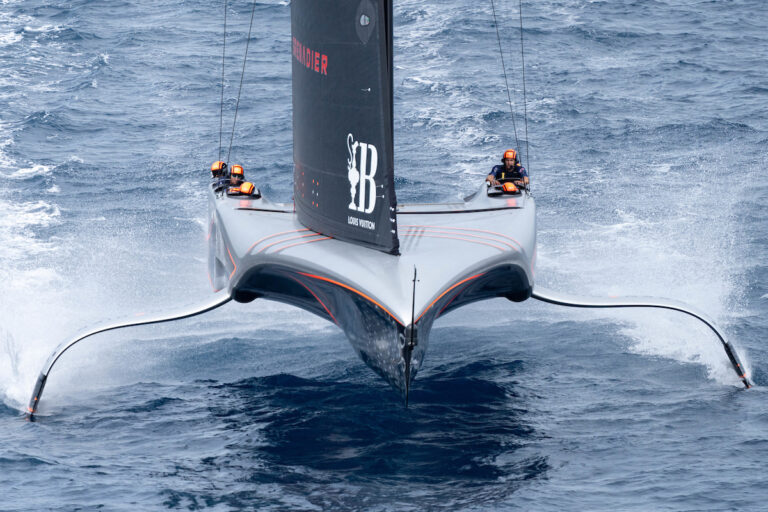
Barcelona Breeze Increase Spikes Intensity

Luna Rossa Dominant on Busy Day in Barcelona
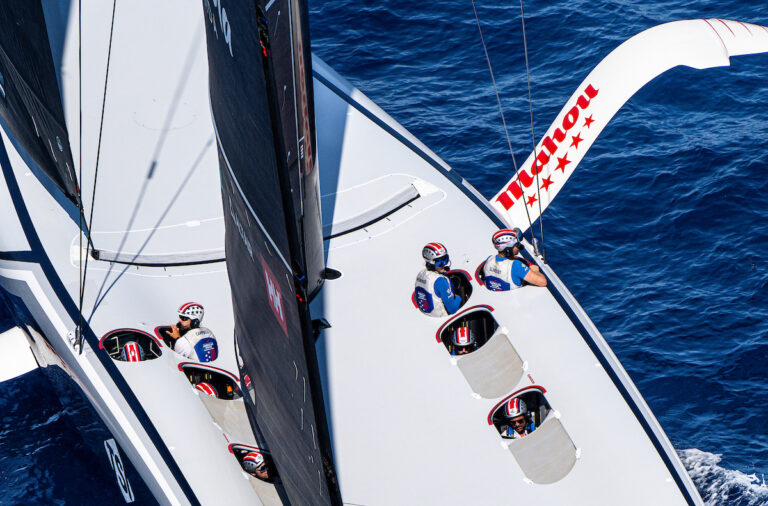
One and Done on Drifter Day of Cup Challenger Series
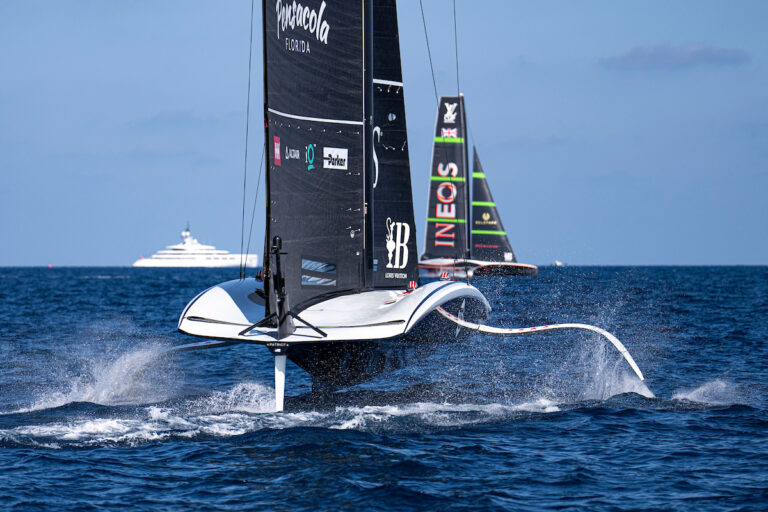
Shocks and Drops At Louis Vuitton Cup Start

- Digital Edition
- Customer Service
- Privacy Policy
- Terms of Use
- Cruising World
- Sailing World
- Salt Water Sportsman
- Sport Fishing
- Wakeboarding
How to Make Your Boat Go Faster
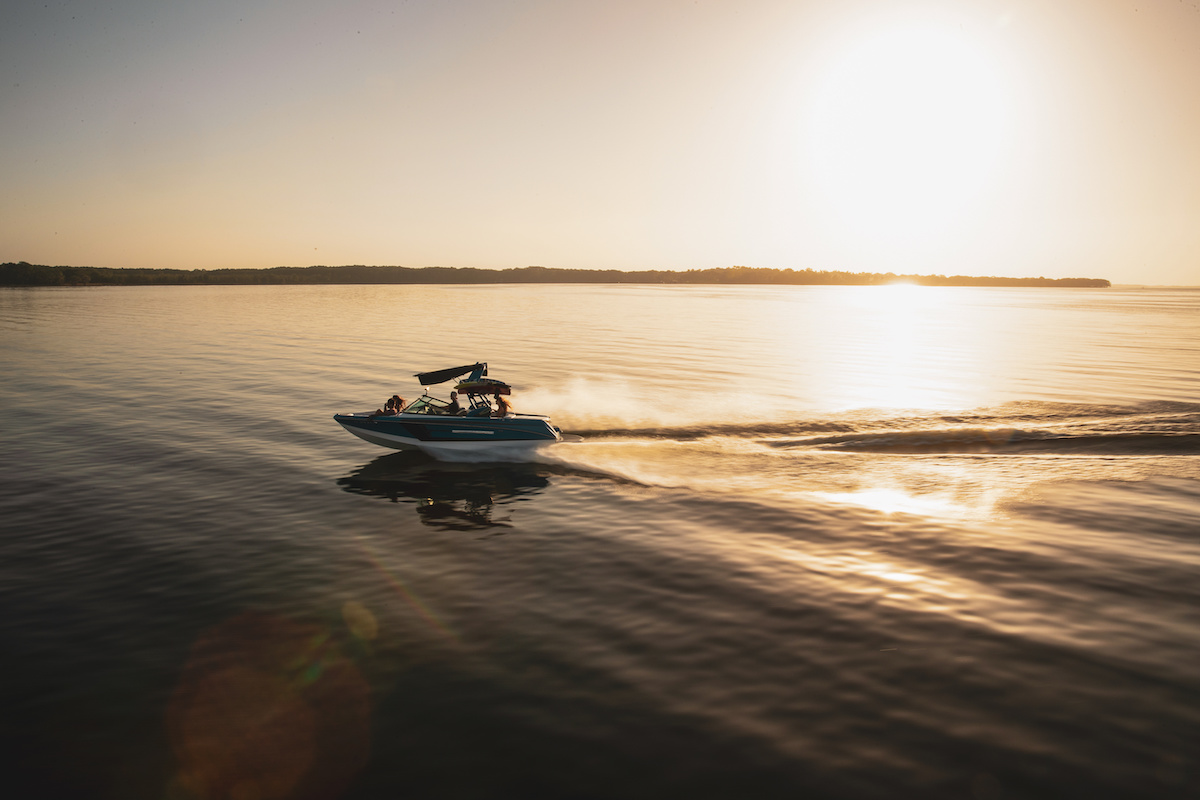
Part of the fun of boating is simply the thrill of going fast on the water. And if fast is good, even faster must be better. Here are some simple ways to help almost any family boat reach its full speed potential.
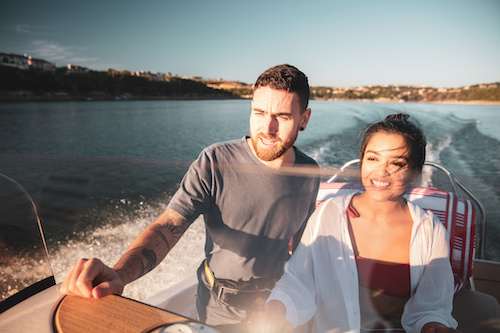
3 Ways to Make a Boat Faster
- Reduce weight.
- Don't over-trim.
- Change your propeller.
Now, let's dive into the details of each of these techniques...
How to Drive a Boat
1. Reduce Weight
Reducing weight is like finding free horsepower, and many boat owners are surprised how much weight they can leave on the dock.
- Start at the bow and work your way back, clearing out every storage compartment, and then put back only the essentials.
- The spare cooler, the extra fishing rods, the old bottles of sunscreen, the extra towels—each item may not weigh much but together it all adds up. We’ve seen boat owners jettison 250 pounds of “stuff” they didn’t really need on board.
- A lighter boat will accelerate more quickly and run with reduced drag because the hull rides a little higher in the water. It may also be more responsive to trim, which can further reduce drag.
- Try to place heavier items you do want to keep on board, like a spare propeller, in an aft storage compartment so they are not weighting down the bow.
Finally, on those days you want to run as fast as possible, drain the fresh water and holding tanks if your boat is so equipped, and head out with less than a full tank of fuel.
2. Don't Over-Trim
The old racer’s motto when in doubt trim it out is true up to a point. Trimming out the sterndrive or outboard lifts the bow, reduces the wetted surface of the hull and thus drag, and increases speed. But if you just trim to the limit you could be over-trimming, and actually losing top speed.
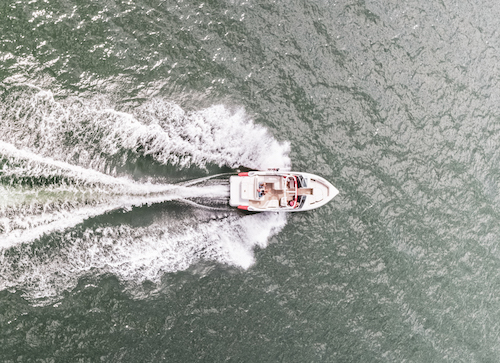
As you trim out the drive, the prop gets closer to the surface of the water and will eventually ventilate, or become contaminated with air, and loose its grip on the water. Engine RPM might keep climbing, but speed will start to go down. This is easy to see with a GPS speedometer or any device with a GPS-generated speed display.
- Run the boat up to full throttle and then very gradually add trim, just bumping the trim button with your thumb, and watch the boat speed.
- If you hear a slight change in pitch in the sound coming from behind the boat, the prop could be starting to slip, and your speed may drop by 1 or 2 MPH.
- Sometimes you can’t hear the prop slip, however, which is why the GPS is helpful.
- If boat speed goes down, bump the trim back down just a little until the prop “hooks up” again and your speed is restored.
How to Trim a Boat: Step-by-Step Guide
3. Change Your Propeller
Changing propellers may make a big difference in boat performance (learn more in Boat Propellers: Repairs and Replacements ), but propping is a complicated science and a high-performance prop is a significant investment—$600 to $800 and more—so you want to get it right, which means seeking some expert advice from a boat dealer or propeller shop.
If you are running an aluminum prop , changing to even a basic stainless steel prop will usually improve top speed. Because stainless steel is stronger than aluminum, the blades on a stainless prop can be thinner, which reduces drag in the water. Those blades will also not flex under load like those of an aluminum prop, and so will maintain consistent performance.
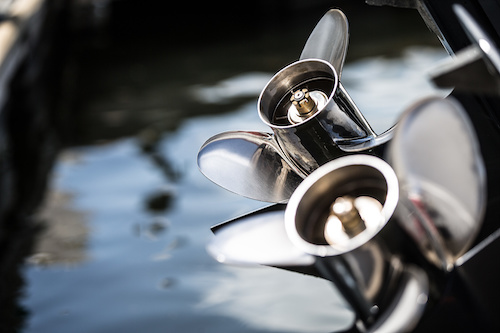
Ideally engine RPM should be near the top of the WOT operating range, which you can find in your owner’s manual. An outboard may have a WOT range of 5200-6000 RPM, for example, while a sterndrive engine has a WOT range of 5000-5400 RPM. If your WOT RPM is too high or too low, you’ll want to try a prop with more or less pitch. Adding propeller pitch will decrease wide-open throttle (WOT) engine speed, while subtracting pitch will increase WOT RPM.
Changing propeller pitch is like changing gears up or down on a bicycle—in a low gear you can ride away quickly but soon your legs will be spinning and you won’t go very fast. In a high gear you’ll need to mash the pedals to start moving but you’ll eventually reach a faster top speed. In this regard, propping for top speed may produce unsatisfactory acceleration—the boat will take longer to get on plane.
The perfect propeller needs to match the boat power, weight, and hull type. This is where expert advice comes in handy. Some dealers will let you test a prop before purchasing, and may even have “demo” props on the shelf just for that purpose.
Read Next: Understanding a Boat's Propeller Pitch
You May Also Like:
- Choosing the Right Fuel & Oil for Your Marine Engine
- Boat Motor Maintenance & Engine Care
- Outboard Engine Care
- Comparing Jet Boats vs. Sterndrive (Prop) Boats
- Find the Right Boat for Your Lifestyle
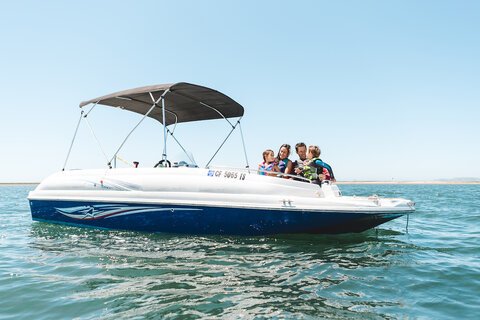
Join Our Newsletter!
Get community news, buying bargains, and how-to guides at your fingertips.
- America’s Cup Updates
- Southampton Boat Show
- British Yachting Awards
- Print Subscription
- Digital Subscription
- Single Issues
Your special offer

20 easy ways to make your boat go faster

Improvements you can begin today to boost your racing results this season need not cost the earth, says Rupert Holmes

When looking at how to move performance up to the next level it’s all too easy to think first in terms of spending money – buying new sails, gear, or even a new boat. However a number of small and easy improvements in your technique can yield great results that will stay with you for the rest of your sailing career.
1. Practise boat handling
This need not be onerous so there’s no excuse to put it off – 15 minutes spent practising your weakest manoeuvre before the start of each day’s racing will rapidly pay dividends. Once this first manoeuvre is much improved, you’ll have a ‘new’ weakest one to work on. A Go Pro video camera in a waterproof housing is an ideal self-coaching tool – they weigh only a few grams, are easily fixed to the back of the boat and will reveal both your
2. Mark all the settings
Knowing the fastest settings for a wide range of conditions is a key prerequisite of good boat speed, yet far too many boats – whether dinghy or offshore racer – fail to mark their controls. Everything should be marked – halyards, sheets, vang, outhaul and so on. Once you start, it’s the beginning of an ongoing process that sees both sail trim and boat handling improve as you gradually refine the markings.
3. Hoists, drops and gybes Getting the spinnaker work right is crucial to good performance and a bit of practice outside of race conditions will always yield excellent returns, especially early in the season. The boats with crew work in this area always gain an advantage on their rivals, whatever the weather.
4. Mark roundings It’s amazing how many even quite good sailors give valuable time away at mark roundings. The biggest mistakes are failing to follow the basic ‘wide in, narrow out’ principle and thereby allowing other boats inside, and uncoordinated sail handling.
5. Work on your starts Few of us can claim to be able to nail the start every time, whatever the circumstances, yet getting away into clean air on the first beat gives a valuable early advantage. If you don’t do so already, try to think of the length of the line in terms of the time it takes to sail along it – this can be a big help in improving judgement of time and distance.
If starting mid-line, get a reliable transit and don’t be afraid of being half a length ahead of the boats around you – most hang back too far, even in the very top level of competition. It goes without saying that a top-notch timer is needed, and on big boats it’s essential to have instruments or software that enable you to ‘ping’ the exact location of each end of the line.
6. Don’t hit the starboard layline too early This is particularly important on the second and subsequent beats, where hitting the layline early means you will end up overstanding, especially in big fleets. In many fleets it’s possible to make the mark if you tack on to port just underneath the boats that are overstanding – but remember to do so just outside of the three length zone and that if you need to luff to shoot up to the buoy you must not go beyond head to wind. In a big fleet it’s possible to pick up dozens of places this way.
Note that it may be too crowded for this tactic to work on the first beat in a big fleet – but watch out for any chancers piling into the mark on port and be prepared to sail round the resulting carnage. However, on subsequent beats the fleet will be more spread out, which means a different tactic can be applied.
7. Take the correct gate On windward-leeward courses with a gate at the bottom, you need to know – or at least have a good guess at – which side of the gate will be favoured before you bear away at the top mark. The bigger the fleet the more important it is that you get this right – going the wrong way can be costly, but it’s really easy to be pinned out to one side by other boats if you don’t have a plan at the top mark.
8. Weight distribution This comes naturally to a few lucky people, but other crews struggle and it’s not unusual to see boats with poor fore and aft trim, especially in light conditions. Never allow yourself to fall into thinking that your boat is sufficiently heavy that this isn’t a priority – even at the 50ft level, the best crews will roll tack in light airs.
9. Change gear to accelerate This is just as important for reservoir sailors who are trying to reach a mark in a wind shadow as it is for keelboat sailors who become buried in disturbed air after making a disappointing start. Sheeting in and attempting to point high is always counterproductive, even in a lightweight boat. You need to ease sheets and bear away until you’ve gained some boat speed or found clean air.
10. Develop high and low upwind modes The ability to maintain VMG while pointing higher than usual – or lower than usual – gives tactical control over other boats around you and helps to keep clean air. It’s one of the best- kept secrets of the most successful sailors and is well worth practising. For instance it may allow you to gain enough space to tack, or squeeze up above an overtaking boat. But don’t be tempted to overdo it – any more than 3-5 degrees in each direction will put you on the conveyor belt towards the back of the fleet.
11. Be consistent It’s important to balance the size of any risks you take against the potential gains – a principle that almost always rules out taking a big risk in exchange for a small gain. People whose results are inconsistent are often those who either take too many risks, or take the wrong risks. When they get a run of good luck they are at the front of the fleet, but all too often the risks don’t pay off and they are mid-fleet or worse.
Alternatively, if your results aren’t consistent, there’s a good chance you’re sailing fast, but being let down by a small number of important mistakes. Identifying these can be very revealing and help propel you a long way up the fleet.
12. Post-race analysis Make a habit of critically analysing your performance in each race – when you do well, it’s important to know the reasons why, so you can repeat the success when faced with the same conditions in the future. Equally, learning from your mistakes will prevent you repeating them. This process also helps to improve team communication.
13. Duck or tack? When beating on port tack you need to know, in advance, whether to tack or duck on meeting a starboard tack boat. If you’re not doing it already it may require some conscious effort to train the right thought processes, in effect rhetorically asking, ‘what would I do if we met a starboard tacker now?’ Before long it becomes instinctive and puts you in much firmer control of your route up the beat.
Equally, if you’re on starboard and want to continue on that tack don’t let a port tack boat that’s on collision course tack under your lee bow. Wave them through instead, and duck their transom if necessary.
14. Sort the boat out! While there are many small ways in which a little extra performance can be gained with a relatively small amount of effort, many of the benefits will be lost if the boat is not up to scratch. There’s also an important psychological aspect to this – it’s easy to blame a substandard boat for disappointing performance, when the real fault lies with the crew.
Does everything work exactly as it should? Would the foils benefit from being faired? If the boat is kept afloat is the bottom immaculately clean? Is the rig properly set up? Can you tweak the rigging tension for different wind conditions? How good are the sails? It also helps psychologically to have a boat that looks smart, so maybe now is the time to get the polish out, or even plan a repaint or a vinyl wrap of the hull. The discipline of keeping the boat looking good also has benefits that are more than skin deep – salt and grit are responsible for the majority of the wear to which deck hardware components are exposed, so a wash with fresh water after every sail will help keep everything working as it should.
15. Look after yourself The right clothing that will keep you warm, comfortable and dry across the full range of conditions that might be experienced during the race is vital if you’re to perform at your best, both physically and mentally. It’s a false economy to attempt to make do if there’s a gap in your sailing wardrobe – you won’t be as fast, you won’t enjoy the sailing as much, and the kit you do have will wear out faster.
16. Nutrition This is also of vital importance and is as relevant to a 40-minute dinghy race as to the 605-mile Rolex Fastnet Race. Quite simply, without the right form of energy – which frequently means complex carbohydrates – you won’t be able to perform at your best: after a period of intense concentration followed by relative inactivity even the fittest sailor will feel tired and make poor decisions. If you’re working hard, don’t underestimate how difficult it is to remain properly hydrated.
17. Stay focused This may sound obvious, but no one can give 100 per cent concentration all the time – and even just a short lapse at a critical time can cost several places. As well as good nutrition, make sure your conversation doesn’t wander away from the race and that everyone is tuned in on the run-up to important manoeuvres. This is particularly important in the latter parts of a race – many crews will be flagging, so those who stay focused on the job can make good gains relative to other boats.
18. Develop your knowledge Your understanding of the rules, tactics and sail trimming should be incremental and ongoing, but we all get stuck in a rut from time to time. If this is you, unless you have loads of free time to play with, choose a couple of specific topics on which to get started.
19. Do something different It’s amazing how much can be learnt by sailing with different people, in a different boat, or in a different place. If you have been sailing the same class with the same crew for a long while, give something else a try for a weekend or two – you’ll almost certainly come back to your regular boat with valuable new skills and knowledge.
20. Over to you… E mail [email protected] with your suggestions…
Read the latest issue of Yachts & Yachting – DIGITAL | PRINT
Follow us on facebook and twitter.
| app to your mobile | ||
RELATED ARTICLES MORE FROM AUTHOR

New issue of Sailing Today with Yachts & Yachting out now!

Baptism of Fire in the Transat Jacques Vabre

37th America’s Cup: Everything you need to know

Yachts & Yachting is the leading performance sailing magazine, covering every aspect of the racing scene, from dinghies to keelboats. Our insightful features and stunning photography bring you the inside track on the world’s most exciting regattas together with advice and inspiration from the very best sailors, coaches and industry experts.
- News & Events
- Sailing Techniques
- Event Spotlight

ADVERTISING

© 2024 Chelsea Magazine Company, part of the Telegraph Media Group | Terms & Conditions | Privacy Policy | Cookie Policy
Practical Boat Owner
- Digital edition

9 expert sailing techniques to help you sail better, faster and safer
- Rupert Holmes
- August 31, 2022
Rupert Holmes shares 9 expert sailing techniques that will make your boat easier to handle, sail faster and safer with better manners…

Roller furling systems allow even big headsails to be rolled away quickly, but sail shape can suffer when reefed
The best way to get a better boat is to improve the one you already have, I have long believed. Given many vessels are not set up as efficiently as they could be, this a realistic proposition for many owners, often without spending a great deal of time or money.
The result can be that less effort is needed to sail the boat, along with simplified and quicker manoeuvres such as reefing and in some cases even tacking or gybing.
1. Check your running rigging
As a first check it’s worth taking a careful look at the running rigging to ensure it all works smoothly. One of the most common problems I’ve seen is with lines that at some stage in the boat’s history have been replaced with those a size (or even two) larger than blocks and other fittings were designed for, resulting in a full-on festival of friction.
Happily, in this case the problem is easily remedied with rope of the correct dimensions. In any case, it’s always worth taking a close look at anything that might create friction in the system. Strategically replacing low-grade blocks, or changing to a Dyneema line a size smaller can make a huge difference.
You may also find blocks, or even masthead sheaves, that have seized, or where plastic pulleys have succumbed to UV degradation. In the latter case many of these may have to be replaced, although with patience it’s often possible to get seized blocks working again.
Article continues below…

Coming alongside – essential skills for shorthanded crews
Coming alongside can be tricky for singlehanded and short-handed sailors. Øyvind Bordal has some sailing skills that will come in…

Offshore sailing gear: How to prepare a boat for extended cruising
Sea Bear is a Vancouver 28 built in 1987. She was generally in very good condition when I bought her,…
2. Lubricate sticky sail slides
Sticky sail slides can make hoisting, lowering and reefing the mainsail a bigger and more frustrating task than necessary. Usually a quick application of spray-on lubricant is all that’s needed to get them working smoothly, making a dramatic difference. A so-called ‘dry’ lubricant is best, but silicone spray or even WD40 will do at a stretch.
If the issue persists it may be worth cleaning the mast track. For this I use a short length of old rope soaked in a solvent such as methylated spirits. This is then pulled up the luff groove using the halyard and retrieved with a downhaul. Very occasionally other problems may be encountered.

Rupert Holmes’s own boat Ammos under spinnaker on a gloriously sunny day in Greece
3. Adjust your tension
With full-length battens, for instance, incorrect adjustment of batten cars or tension may cause problems. Equally, I’ve occasionally seen sail slides that are not a good match the profile of the luff groove.
There are also good reasons why boat owners spend large amounts of money on high-end roller bearing luff cars. While these are by no means essential, a well set up system is a joy to use.
As an example, I have a friend with a Sigma 362 where, even with a following breeze, if you sheet the main on tight, flake the halyard and release the clutch the sail will rattle down into the lazybag in only a couple of seconds. Do it right and it works just as well in 25 knots, even with the wind right aft.
4. Add a cam cleat
If you ever sail single-handed a cam cleat on the mast is a useful addition on boats with the main halyard led aft to the cockpit. This enables the halyard to be bumped at the mast using your body weight, then secured temporarily before you go back to the cockpit for final tensioning.
On most boats the geometry of the blocks at the mast base is such that when the halyard is tensioned it pops out of the cleat. This means you can never forget to uncleat at the mast before dropping or reefing the sail.
To facilitate dropping the mainsail most cruising boats have lazyjacks, though I’ve never bothered on Ammos , my Discovery 3000 kept in Greece, which at 30ft long has a small enough mainsail that it takes only a few moments to flake it, even when single-handed.
Sailing a larger boat without lazyjacks may be a problem when short-handed, but it’s easy to rig a temporary arrangement if there are a couple of spare spinnaker or jib halyards. A strop each side of the boom, lifted with a halyard flipped aft of the shrouds, will make quick, improvised lazyjacks.

Putting the third reef in while sailing downwind
5. Easier reefing
Slab reefing systems ought to be straightforward to use, with one person on deck able to easily drop a reef in, or shake one out within a minute or two.
This is true even on a boat without an autopilot if you simply heave to first. However many boats, especially 1980s and 1990s boats , have lines led aft to the cockpit, but still require someone at the mast to hook an eye in the luff of the sail over the rams horn at the gooseneck.
This violates a key principle for easy handling: that everything necessary for reefing should be in one place – either handled at the mast, or led aft to the cockpit. The easiest option is usually to lead separate reefing pennants from each luff cringle back to the cockpit, though this may require extra clutches.
Newer boats may have so-called single-line reefing in for the first two reefs. However this adds friction, which in my experience increases dramatically with time.
If your boat is set up this way it’s therefore worth putting time aside to remove the boom end caps every couple of seasons to clean the cars up and ensure the hidden parts of the lines are in good shape.
A common misconception is that it’s impossible to reef with the wind aft, yet that can lead to the operation becoming unnecessarily wet and uncomfortable when you round up from a downwind course to bring the wind forward of the beam. This massively increases the apparent wind, which powers up the boat enormously at just the wrong time.

Marks for a third reef on Zest ’s main halyard
It’s important not to underestimate this effect. The power of the wind increases with the square of windspeed, so sailing at 5 knots on a dead run in 18 knots of true wind and then rounding up with the wind 60° off the bow sees the force of the wind experienced by the boat increase by a factor of around 2.5.
However, if you shorten sail with the wind well aft of the beam the apparent wind is minimised, as is the amount of water on deck.
I’ve successfully done this on hundreds of craft, ranging from a classic 1970s Nicholson 55 to the latest offshore raceboats. It’s easiest with in-line spreaders, but will also work if they are swept well aft.
On boats well under 25ft it’s possible that no special hardware will be needed – the sail can often simply be manually dragged down to the reefed position. However, single line reefing, or additional reefing pennants on the luff, will allow the sail to be winched down if necessary.
Zest has swept back spreaders and standard luff slides, plus simple roller cars on the top two full battens. In 25,000 miles we’ve never found reefing when downwind a problem, even though when racing we may carry the full main downwind until gusts are well over 30 knots.
Granted it may not always look pretty, especially when dropping the first reef in, as the leech of the sail will fall forward of the shrouds. But rounding up and flogging the sail hard while reefing is not a good look either.
Some may worry about damage to the sail when pressed against shrouds and spreaders, however, my experience is that’s only a worry for those who are engaged in a tradewind circumnavigation .
For example, Zest ’s last mainsail, made of a high-tech membrane material, lasted for 24,000 miles and it was flogging, not spreader chafe, that was responsible for its eventual demise.
One factor that’s rarely mentioned outside racing circles is the benefit of having marks on the main halyard at each of the reefing positions. This rapidly speeds up reefing: you can drop the halyard immediately to the relevant mark, then tension the luff pennant. A similar mark on each reefing pennant is equally helpful for efficiency.

Partially reefed genoa with poor sail shape
6. Handling headsails
While it’s generally reasonably quick and inexpensive to sort mainsail handling systems of reasonable efficiency, the same is not always true of headsails.
Of course roller furling systems enable even the biggest of genoas to be rolled away quickly and easily, but sail shape when partially reefed may leave a lot to be desired and in too many cases it’s diabolical.
It’s easy to think this shouldn’t be a big problem for cruising boats. After all, few of us relish a long beat to windward in a hefty breeze and I know people who won’t leave port if there’s a Force 4 or more forward of the beam.
But they all have the luxury of plenty of time and will stay in port for a couple of weeks if necessary. Sadly few of us have that option, which makes the ability to sail to windward reasonably efficiently in a decent breeze important.
This is also a reassuring safety factor that would enable a boat to beat off a lee shore in the event of engine failure, for instance. There are two common issues with many headsail set-ups. Firstly, the heavy UV strip on the foot and leech of a genoa adds thickness.

Protective UV sock over a furling headsail
At first sight this may appear harmless, but it means these parts of the sail roll up fastest, leaving the middle baggy when the sail is reefed. That, in turn, creates extra power, increasing heel and weather helm just at the time you want the flattest sail shape possible.
This is why a lot of modern performance cruisers have a sock to protect the sail from UV degradation instead of a UV strip.
It’s more expensive, and more time consuming to use, but the difference in sail shape is amazing. In addition, they are more likely to have non overlapping (or minimally overlapping jibs) rather than the big genoas that were standard until about 15-20 years ago.

Code 0 deployed in front of the furled non-overlapping jib
Smaller jibs also need fewer wraps to reduce sail area in strong winds than a 130% overlapping genoa, so the shape suffers nowhere near as much.
The downside, however, is that a Code 0 and/or spinnaker is needed for reaching and downwind sailing in light airs.
Fortunately, there’s much that can be done to improve many existing arrangements without replacing sails. Again, make sure the basics are in order before going any further.
Increasing halyard tension in stronger winds will help to flatten the sail and draw the depth forward.
If you have an adjustable backstay, increasing tension will reduce forestay sag, which again helps to flatten the headsail. And make sure headsail sheet cars are properly adjusted.
In stronger winds a decent heavy-weather jib can transform the feel of the boat, and markedly reduce the length of a long slog to windward, compared to sailing with part furled roller genoa.
The easiest way to rig a heavy weather jib is to hank it to a removable inner forestay, using a Dyneema stay with a 2:1 purchase led back to a coachroof winch for tensioning.

Zest ’s storm jib proving its worth on a return from the Azores
This kind of arrangement can often be set up for couple of hundred pounds on a 30-40ft boats, especially if your mast section will accept Seldén’s neat inner forestay fitting that’s easily retrofitted.
If it’s set just below the main forestay running backstays are very unlikely to be needed. Some hank-on sails that change hands on eBay in the £50-£200 range could be worth exploring if you’re on a tight budget.
The sail can be set up, hanked onto the stay and bagged at the mast, ready to be pulled forward when needed in a rising wind. This greatly facilitates the sail change, with minimal effort. This is the set up we have on Zest , and it works extremely well.

Hank on jib with sail cover enabling it to be stowed on deck
A refinement to consider is putting a slab reef in this sail, which makes for an easy transition to an almost storm jib sized sail. Another viable option for a smaller budget, especially if furling gear needs replacement, is to switch back to hank-on jibs. Fortunately, this doesn’t need to be the step back to the 1970s that it might first appear.
Today they can be fitted with slab reefs that can be set up so the sail can be reefed without going forward. The ideal set up might be a 108% jib with a 20% reef for light and moderate winds, plus a smaller sail (that’s also reefable) for windier days.
This can create a very flexible and efficient set up that requires minimal deck work. A custom sail cover would enable the sail to be left tied to the guardrail when you leave the boat, rather than packed up and stowed below.
I have exactly this set up on Ammos in Greece and I see it increasingly frequently on cruising boats in France as well, though on this side of the Channel it still appears to be the preserve only of the short-handed offshore racing community.
If you’re in a position where the headsail, or hardware such as the furler, are nearing the end of life it’s worth having a careful think about how to modernise the whole set up, rather than spending a lot of money replacing like with like.
It’s important to recognise there’s no compulsion to keep exactly the same sail plan as when your boat was built. Sail design, materials and fashion – good and bad – all change with time.

Preventer rigged on Zest
7. Gybe preventers
Sailing is a remarkably safe activity, despite the potentially dangerous environment in which it takes place. But the potential for an uncontrolled gybe to have a catastrophic outcome is one of a handful of situations that should concern us greatly.
Therefore anytime you’re sailing with the apparent wind well aft of the beam it’s a good move to rig a preventer. The classic solution is a line led forward from the boom to stop it crashing across the boat – hence the term gybe preventer.
It should be as much part of the standard package of running rigging as the mainsheet, but sadly this seems to be rarely the case. A preventer should run from the aft end of the boom, outside the shrouds, forward to the bow, then back to the cockpit for easy adjustment.

Preventer line backed up on a winch
It’s often tempting to attach the preventer to the mid point of the boom, but that’s a recipe for a broken boom or gooseneck. It’s even worse if the preventer is taken from the middle of the boom down to the toe rail, as the line acts downwards, which dramatically increases mid-boom bending loads.
Equally, a preventer should never be made fast on the foredeck. In order to have freedom to luff up or gybe to avoid collisions it must be possible to adjust the line from the cockpit.
In the event of an accidental gybe it’s also important to be able to safely ease the preventer when it’s under load. If it can’t be taken to a convenient winch, then a mooring cleat of a style that allows a rope to be eased with one turn around the cleat will suffice.
At the most basic level you probably don’t need any extra fittings or equipment to rig a preventer. On scantily equipped charter boats I normally use a long mooring like led through the bridge of a foredeck mooring cleat and then to the windward primary winch or a transom mooring cleat.
In fact this is the type of arrangement I still use on Ammos . At 30ft the boat is small enough that it’s easy to sheet the mainsail in and attach the preventer to the boom end without perilous gymnastics.
Larger yachts are a different matter, as it’s usually impossible to easily reach the end of the boom in safety when at sea. This is when a permanently rigged two-part preventer system is a far better bet.
The first element is a strop roughly two-thirds of the length of the boom that’s permanently attached, usually with the front end clipped to the vang fitting. The second part runs from the cockpit to the foredeck and then aft outside the guardrail. When not in use I usually tie the free end to the stanchion aft of the shrouds.
It’s then an easy 30-second task to connect the two elements, with no need to lean over the lee side of the boat. Just as I’d not use a snap shackle on a halyard for climbing the rig, I also avoid them for preventers. Instead the two elements can be joined with bowlines, which is quick and easy, even in challenging conditions.

Comfortable, easy and efficient sailing downwind with a poled out jib
8. Poled out headsails
When running downwind, poled out headsails reduce rolling, making a boat tremendously more stable and comfortable, especially in big waves. However, in anything other than the smallest of yachts this needs to be done the proper way.
Important factors are to keep the pole triangulated with an uphaul, and a downhaul led through a block forward and, on big yachts, an after guy.
A third sheet should also be used, as this allows a quick course change, with the headsail ready for use in its normal fashion once the outer end of the pole has been lowered to the deck.
However, this may be impractical on larger yachts where the clew of a furled genoa is too high to reach safely. In combination with a gybe preventer, poled out headsails are usually both the fastest and more comfortable way of going downwind in more than 20 knots of true wind, even when racing offshore.
When cruising , even if a spinnaker is carried on board, there’s often little benefit to be gained in using it in more than 15-16 knots of breeze as a poled out genoa and mainsail combination will blow you downwind almost as fast, with no risk of unwelcome drama.
9. Spinnakers and reaching sails
These are often not thought of as sails for easy cruising, yet they can be transformative on light airs days when you would otherwise be motoring. Good light airs sails allow you to make the most of quiet, relaxed sunny days with gentle sailing that just wouldn’t be the same if you were under engine.
However, many cruising yachts are not set up to make the most of their potential in light airs.

Ammos slipping along at four knots in only five knots of true wind under a much repaired cast off asymmetric spinnaker
Older boats may also lack more recent efficient and easily handled reaching sails such as Code 0s, while old-school cruising chutes are nowhere near as effective downwind as a modern asymmetric spinnaker. There’s also still a place for symmetric spinnakers set from a pole.
Budget conscious owners of cruising boats can often repurpose old downwind racing sails. The reason for this is that, to be competitive, racers need to use their kites even when it’s blowing hard, but the biggest gains for cruising yachts are in gentle conditions, with the apparent wind under 10 knots.
The much- repaired big asymmetric spinnaker on Ammos , for example, is a cast-off from a 1720 sportsboat that cost £150 more than 10 years ago.
Equally, an old racing Code 0 with a damaged leech – the part that invariably fails first – can have the weakened area cut away for use as a cruising sail without loss of efficiency or sail shape.
Why not subscribe today?
This feature appeared in the August 2022 edition of Practical Boat Owner . For more articles like this, including DIY, money-saving advice, great boat projects, expert tips and ways to improve your boat’s performance, take out a magazine subscription to Britain’s best-selling boating magazine.
Subscribe, or make a gift for someone else, and you’ll always save at least 30% compared to newsstand prices.
See the latest PBO subscription deals on magazinesdirect.com
- 2024 BOAT BUYERS GUIDE
- Email Newsletters
- Boat of the Year
- 2024 Freshwater Boat and Gear Buyers Guide
- 2024 Boat Buyers Guide
- 2024 Water Sports Boat Buyers Guide
- 2024 Pontoon Boat Buyers Guide
- Cruising Boats
- Pontoon Boats
- Fishing Boats
- Personal Watercraft
- Water Sports
- Boat Walkthroughs
- What To Look For
- Watersports Favorites Spring 2022
- Boating Lab
- Boating Safety
- Ultimate Boating Giveaway

Six Tips for Making Your Boat Faster
- By Eric Colby
- Updated: July 16, 2014
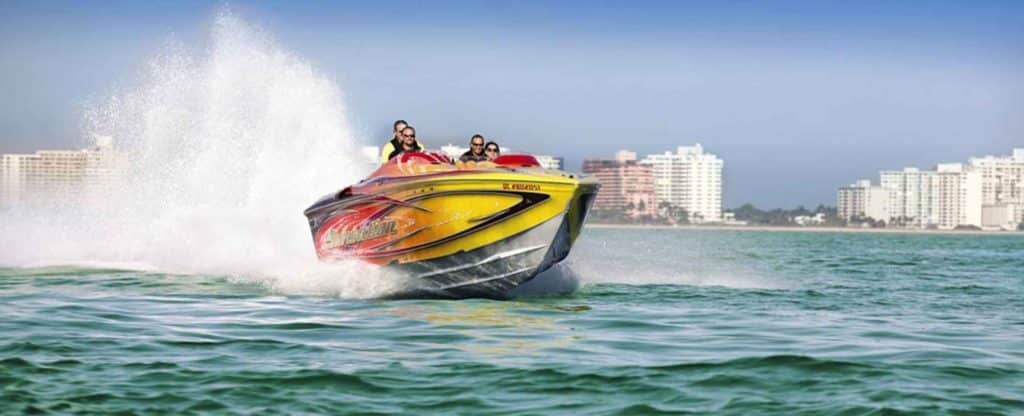
If you don’t want to make the investment in coating your boat’s bottom or running gear, here are some other ways to improve performance without touching the engine.
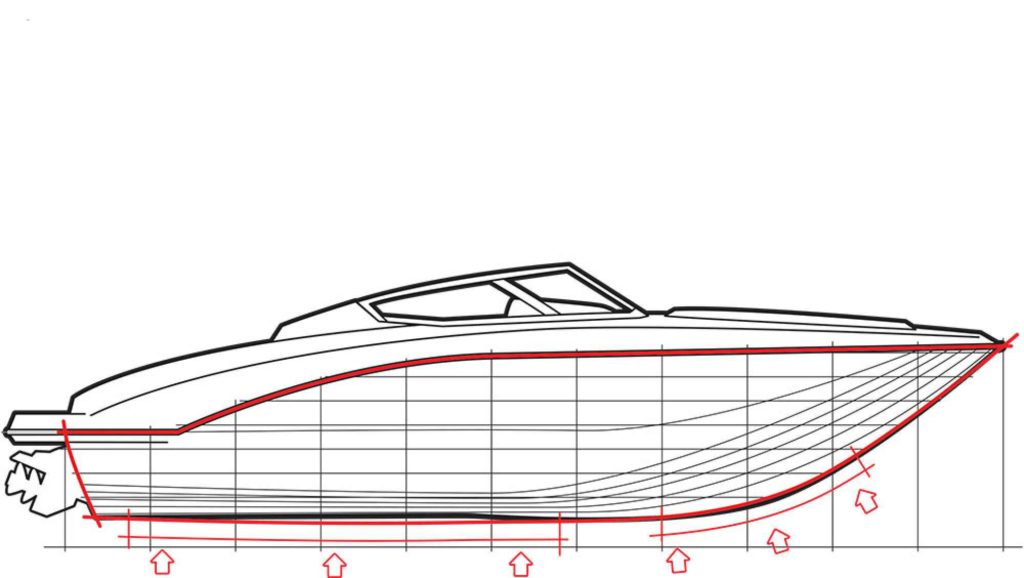
Have your boat’s bottom blueprinted. It’s a fancy way of saying, “Have it perfected.” All the strakes and chines get straightened and sharpened, and any unintended hook is removed.
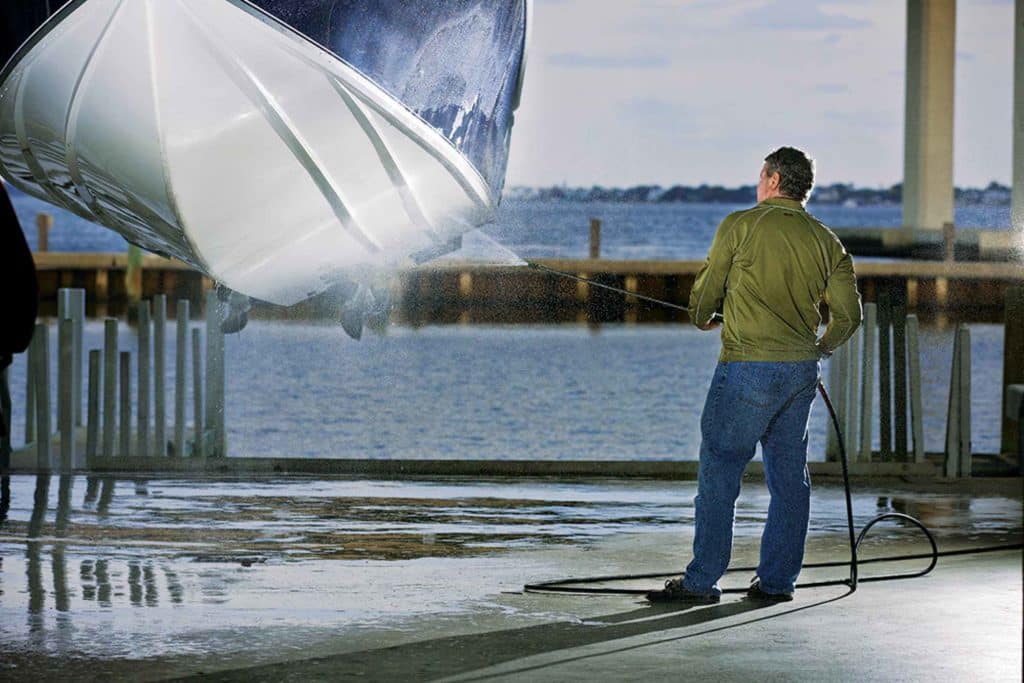
Scuff your boat’s bottom with sandpaper at a 45-degree angle. It breaks adhesion with the water’s surface more easily.
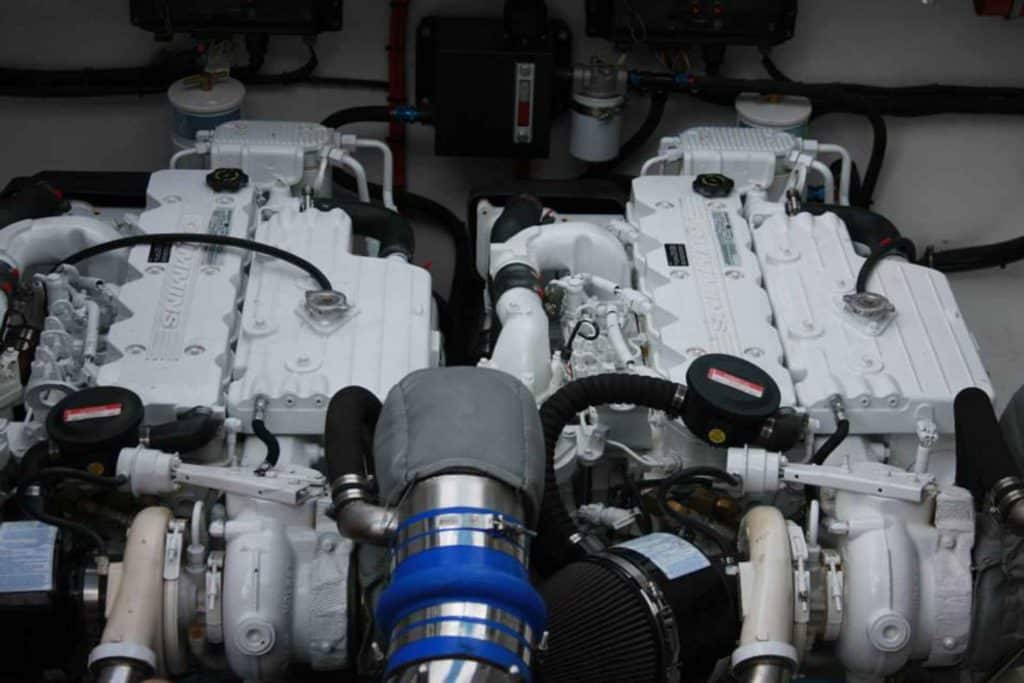
Have your engine’s compression checked and compare it to the manufacturer’s specifications. If it doesn’t have good compression, it’s not making full power.
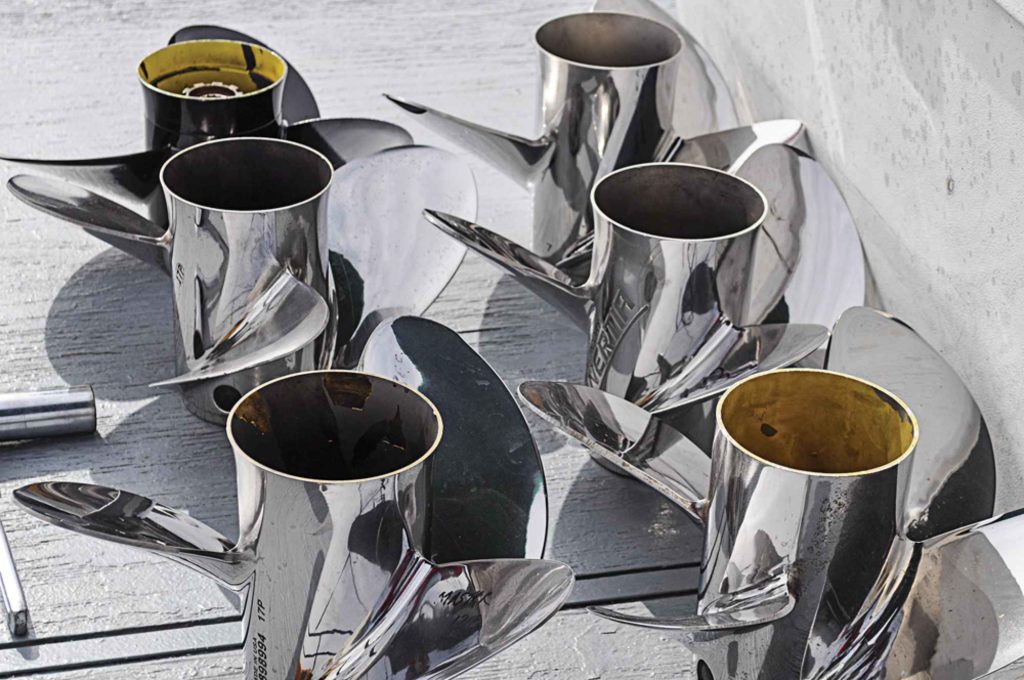
Experiment with the number of propeller blades. Most people already know to switch to stainless steel, but playing around with different blade configurations can deliver surprising results.
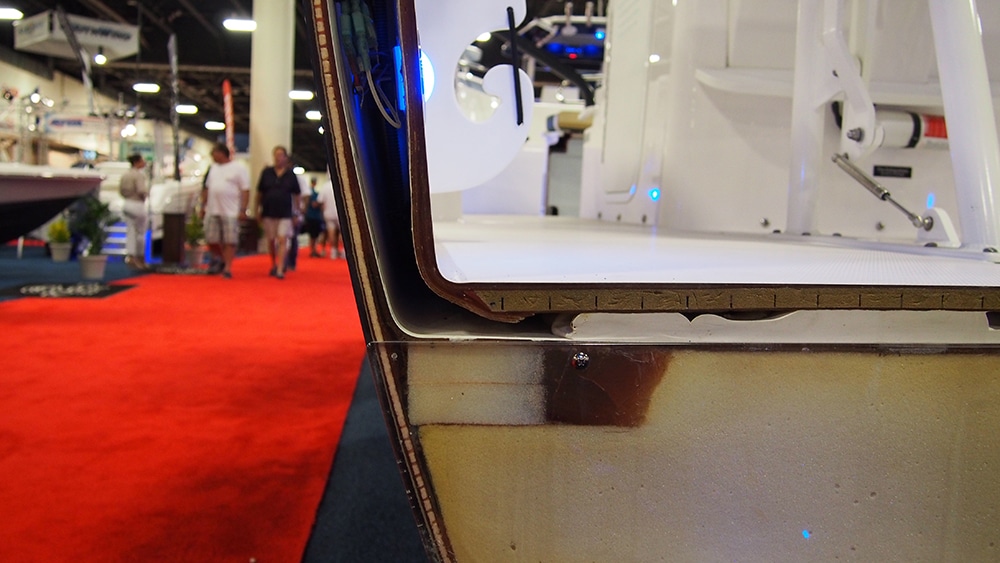
Weigh your boat. If it’s substantially heavier than the specified weight, the flotation foam needs to be removed and replaced with dry stuff. Not a fun process.
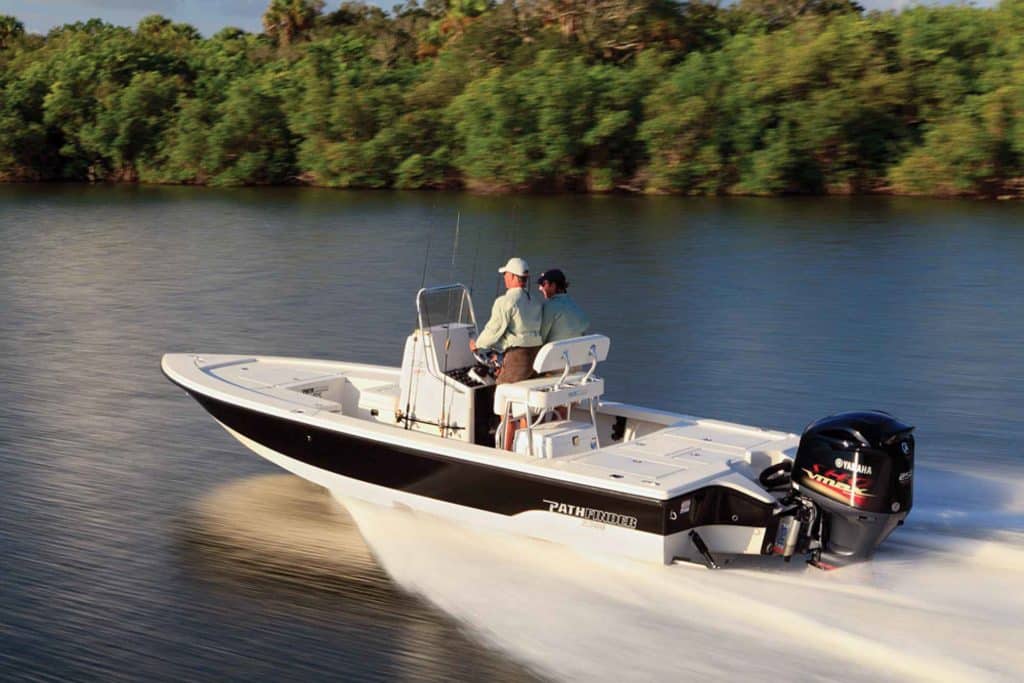
Adjust your drive height. Often raising the drives or outboards higher out of the water improves speed because it reduces drag.
- More: How-To , Photos
More How To

On Board With: Monique Richter
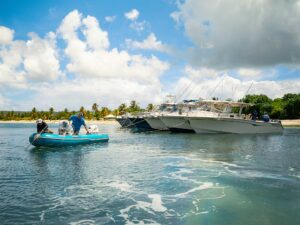
Grady-White Pulls off Its Largest Raft-up Ever in Vieques, Puerto Rico
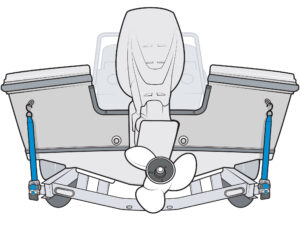
Installing Retractable Transom Straps
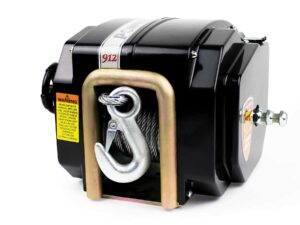
How to Choose a Trailer Winch
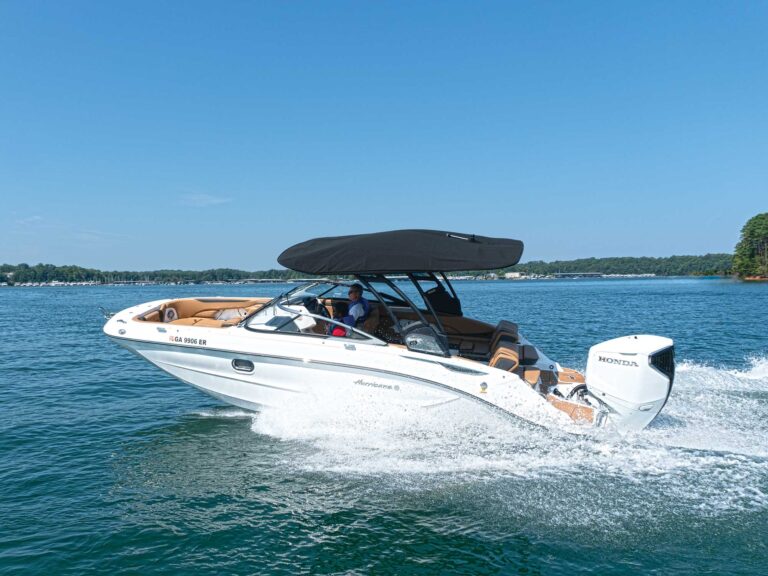
Boat Test: 2024 Hurricane SunDeck 2600 OB
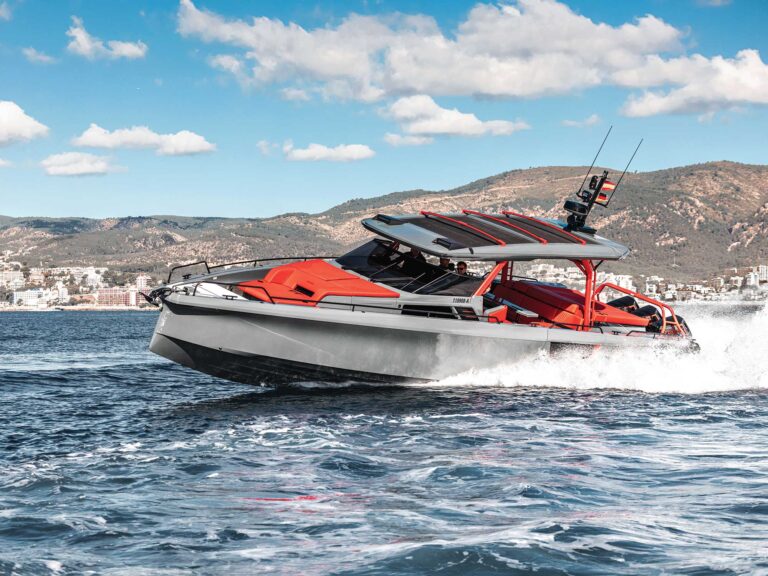
Boat Test: 2024 Brabus Shadow 1200 Sun-Top
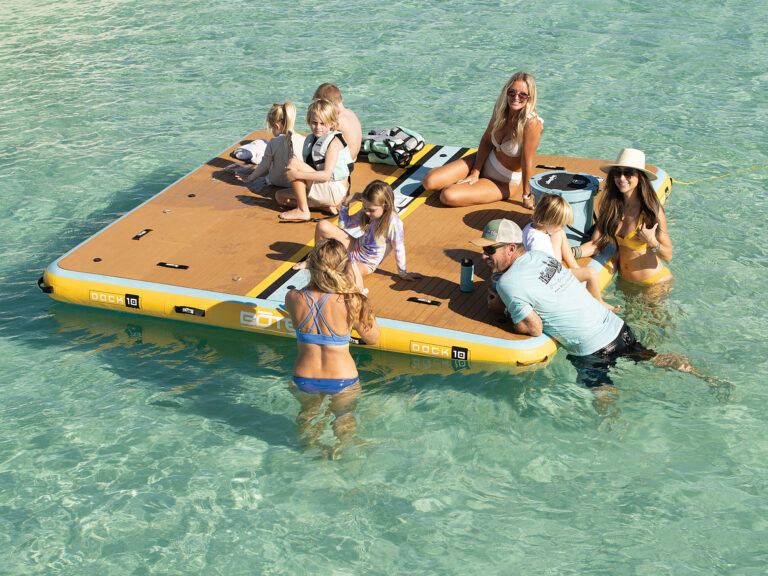
Inflatable Water Mats for Boaters
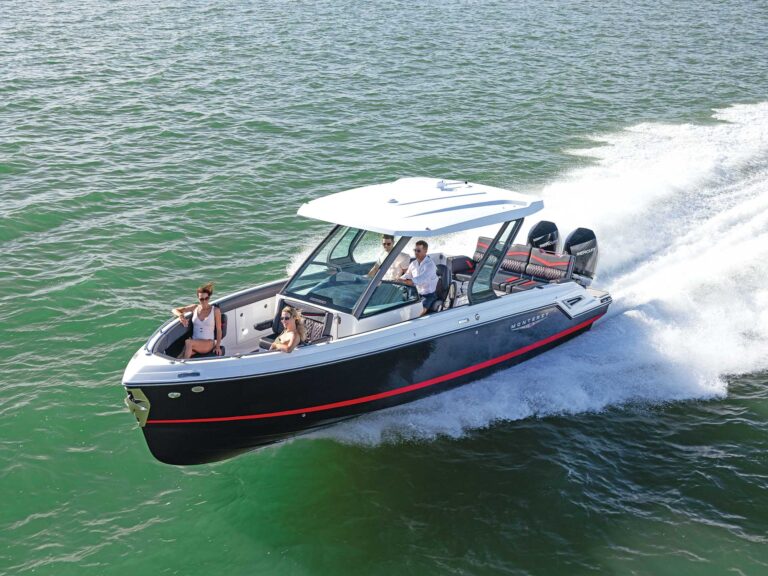
Boat Test: 2024 Monterey Elite 30

- Digital Edition
- Customer Service
- Privacy Policy
- Terms of Use
- Cruising World
- Sailing World
- Salt Water Sportsman
- Sport Fishing
- Wakeboarding
Many products featured on this site were editorially chosen. Boating may receive financial compensation for products purchased through this site.
Copyright © 2024 Boating Firecrown . All rights reserved. Reproduction in whole or in part without permission is prohibited.
- Boating Techniques
- Is There A Way To Make Your Boat Faster?
Is There a Way to Make Your Boat Faster?

If you love the idea of hitting high speeds in the water, or if you just want to reach your next destination in less time, you may be interested in making your boat faster. But what’s the best way to do it? And is it possible for every boat?
Basic Ways to Make a Boat Faster
Let’s start with some high-level approaches you can use to make a boat faster.
- Upgrade the mechanical features. First, you can upgrade the mechanical features of the boat. Upgrading the engine or changing the propeller could give your boat more power or enable it to do things it otherwise couldn’t do.
- Avoid over-trimming. Adjusting the trim is important to control the angle at which the boat hits the water. Trimming can help you achieve more speed and reduce drag – but there’s a limit to how much speed you can gain this way, and over-trimming can have a detrimental impact.
- Reduce onboard weight. Even without any prior experience in physics, you probably understand that the heavier something is, the harder it is to get it to accelerate . In other words, a heavier boat is going to be slower and a lighter boat is going to be faster.

Improving Your Propeller
One of the best and most reliable ways to increase the speed of your boat is to upgrade its mechanical features – most notably, its propeller. Of course, upgrading the propeller can be a major investment, costing several hundred dollars (and sometimes more).
If you currently have an aluminium propeller, transitioning to a stainless steel version can likely increase your top speed; stainless steel is a stronger, more durable material than aluminium, allowing you to reduce drag in the water with thinner blades. Additionally, they’ll be more resilient to damage over time, allowing you to maintain consistent performance over time.
You’ll also need to think about the pitch of your propeller. In some ways, changing the propeller pitch is like changing gears on a bicycle. Lower gears allow you to build speed quickly, but eventually, you won’t be able to transmit as much force as you need to climb speed, whereas higher gears require more force to get going but allow a much higher top speed.
Improving the Engine
It’s also possible to upgrade the engine of your boat itself. For example, you can “jack up” an outboard engine to raise the engine vertically and achieve less drag. However, this won’t result in a major increase in speed and could be an expensive improvement.
There are also a number of modifications you can make to your engine to make it operate faster; however, many of these can risk the wellbeing of your engine. Superchargers, for example, are capable of injecting more air and fuel into the cylinders of the engine using forced induction. You’ll be able to boost horsepower by as much as 50 percent this way – but you’ll also void your engine warranty and risk its safety in the process.
Alternatively, you could try to pull off an engine control unit (ECU) upgrade. Your ECU functions as a digital system that tells your engine what to do. If you replace or “reflash” the ECU to boost horsepower, you can make a marginal improvement to its performance. Again, however, this change may void your warranty and increase risk to your engine.
Ideally, your propeller will be a perfect fit for your boat’s power, hull type, and weight – which can be a tricky balance to strike. Consider talking to a propeller professional, or at least trying out multiple propeller demos before committing to a final decision.
Reducing Weight
There are many different ways to reduce the weight of your vessel as well. Every bit counts!
- Empty your storage. Go through your boat from end to end and check all storage areas for items you might not need. Extra fishing supplies, old accessories, and other items may be adding dozens of pounds to your vessel unnecessarily.
- Keep necessities in the aft. If you do have heavier items you need to keep around, like a spare propeller, try to keep them in the aft so they don’t weigh down the bow.
- Limit passengers. Remember that each person on your boat is contributing to the total weight keeping it down. If you want to go faster, keep fewer people onboard.
Avoiding Over-Trim
Boat racers sometimes rely on the saying “ when in doubt, trim it out !” But there’s a limit to how much value you can get this way.
Trimming out will lift the bow of your vessel, reducing the amount of the hull in the water and therefore reducing drag. And of course, reducing drag will increase your top speed. That said, as you trim, the propeller will get closer and closer to the surface of the water, eventually getting direct exposure to air. When that happens, it won’t be able to “grip” the water as much; at this point, the RPM of your engine will keep raising, but your speed will lower and lower.
To get the right balance, use a GPS speedometer to observe the changes in your speed as you adjust the trim. Add trim as gradually as possible, keeping a close eye on the changes in your boat’s speed. If and when the boat speed begins to decline, turn the trim back down until it feels right.
Buying a Faster Boat
Of course, if you’ve tried these steps and you’re still not satisfied with your boat’s speed, you do have another option: you can buy a faster boat. If you feel limited by your current options, this may be your best path forward.
Are you interested in upgrading your current boat or trading yours in for something faster? If so, TheYachtMarket can help. We’ve got new and used boats for sale of all varieties, from all over the United States, Europe and the rest of the world. Browse our boats for sale today and find something that fits your needs!
Share this article
You might like.
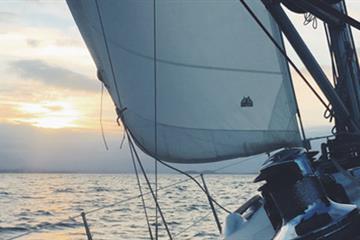
Sign up to our newsletter
By submitting this form, you agree to our Privacy & Cookie Policy
Change units of measure
This feature requires cookies to be enabled on your browser.
Show price in:
Show lengths, beam and draft in:
Show displacement or weight in:
Show capacity or volume in:
Show speed in:
Show distance in:

- Meet Our Sailing Instructors
- Sailing Captains
- Testimonials
- Become an ASA Instructor
- Earn Your Captain’s License
- Join Our Team

How to Trim Mainsail to Make your Sailboat Go Faster!
- Post category: Sailing Classes / Sailing Terms
When we look to trimming our mainsail, we really do need to understand the principles of sail twist and why sail twist is so important.
As your boat sails along, the wind hitting the top of the sail is a little bit stronger than the wind hitting the bottom of the sail. For this reason, the top of the sail needs to be slightly looser than the bottom. This is where sail twist comes in. By using the mainsheet, the traveller, and the vang, depending on the point of sail, we can get air to move smoothly and drive the boat across all points of that mainsail. This will lead you to have an increase in speed.
Main Sail Twist
The main ways to assess twist are twofold. Number one, look at the sail. You can see the difference in position between the two and the bottom of the sail. The other one? Yep, back to those telltales. Look to see if all the telltales are flying.
Upwind, we need to use the mainsheet and the traveler to control the twist. Aside from changing the position of the mainsail, the sheet also exerts a huge amount of force on that sail. By hauling the mainsheet in, you pull the sail down. This exerts a downward force on the sail and it removes twist. It does this by closing the leech, or flattening the sail a little bit, and what you will find is that the telltale will fall to leeward.
So adjust the mainsheet until the upper telltale flies fully from the leech of the sail. Then your twist is set. As a rule of thumb, this will occur when the upper camber stripe is parallel to the boom.
Once you’ve set the twist, you can then use the traveller to adjust the position of the mainsail to depower the sail if it becomes too windy or you have gusts. And at all times maintain the twist in the sail. Our traveller is located on the coach roof, but a lot of them are elsewhere – cockpits and at the stern.
The traveler is normally kept in a central location; however, in lighter airs, you can move it to windward, and in windier conditions you can move it to leeward. All this is going to increase your boat speed.
What about light wind?
In light airs, this means that you can ease the sheet and keep the boom in the centerline position. Easing the sheet allows the boom to rise a little bit, thus maintaining the twist and driving the boat forward – greater speed.
Trimming Sails downwind
Sailing downwind is slightly different. Once the boom has passed to leeward of the traveler, you need to use the kicker or the vang to control the leech tension and therefore the twist.
Off the wind, by easing the kicker, you allow the boom to rise. This opens the leech and the twist increases. Contrarily, tightening the kicker will close the leech and decrease the twist. And you often need to adjust this because otherwise you’ll get too much twist in the sail as you’re sailing downwind. Again, make sure you look at those telltales.
For those of you who are now like, “Wait, what the hell just happened? What was that all about?”, it is really straight forward. You’re on a sailboat, you pick the point of sail that you want to get to, and you adjust your mainsheet first to get the twist set. Then, once you’ve set your twist, you use the traveler to control the sail angle.
Sailing downwind is slightly different because as you let the boom and the sail out, you have no effect on the traveler. This means that you have to control the twist of the sail using the vang or kicker.
What a lot of people do when they’re starting to learn to sail is they use the mainsheet to control the sail angle for all points of sail and at all wind strengths. And while that is a really basic way of adjusting the angle of the sail to the boat and thus also the wind, it also means that you are changing the twist in your sail and losing performance.
Keep an eye up on the Hawk
Now, this brings me on to the next bit that I really do want to talk to you about, which is how you assess the boat going faster. A lot of the time you just use the instruments. You use your log and you use the wind strength gauge, the anemometer, to work out what the wind strength and direction is.
But there’s a hawk at the top of your mast which will show you the wind direction, and really, without going into all this Miyagi stuff, you should be able to feel the boat. You’ll be able to feel the boat. Each boat is different, and each boat has a groove – a groove where it’s really happy. In modern monohull construction, there are chines on boats so the boat will sit in a groove at a certain heeling angle. We know Ruby Rose, and I know exactly when she’s happiest.
Feel the sailboat
So feel the boat, look for little increases in speed, and look up at the sail. Continually look up at your sail, look at your twist. If you’re sat in a good helm position, you should be able to look at your mainsail and go,
Take too much twist away, flatten the sail by pulling down too hard, you’ll lose the twist. If that is wrong for the wind direction and wind speed, the telltale will fall. Similarly, put too much twist in and you will again see the telltale fall and you’re losing performance. So it’s about making sure that you understand that twist occurs because the wind is stronger at the top of the sail or the top of the mast than it is at the bottom, and adjusting your sail accordingly. It is as simple as that.
Number one, get your twist right. Number two, then play with the traveler and the vang to adjust the angle of the mainsail to the boat. Simple as.
The second way I can make the sailboat goes faster
The second way that I can make you sail faster is by asking you to look at and adjust your leech lines. If your mainsail doesn’t have leech lines, get some fitted. If you are ordering a mainsail when it comes to change your sails, ask your sailmaker to include low-stretch leech lines. For us, we always ask for Spectra because it is very, very, very hard-wearing and very low-stretch.
Now, what are leech lines?
They are small – in our case, I think they’re 4 millimeter – lines that run on the leech or the aft edge of the sail. They run through the sail, and there is a small cleat. There are cleats placed at every reef point, actually, that allow you to tension the leech of our mainsail.
Why would we need to do this? Because if you look up at a mainsail with an incorrectly tensioned leech, you will see that the upper edge is fluttering a little bit. That flutter means that you’re not getting the drive from your sail that you need to. So what you do is go out on a moderately breezy day – not anything crazy – and look at the upper edge of your sail. If you see that it’s fluttering a little bit, adjust your leech line. Tension it slightly until that flutter stops. Also, be careful not to over tension it. If you pull down too hard, you’ll induce a curl into the back of your sail, and that actually stops it driving. So a small adjustment, and do it fairly regularly.
In addition to this, keeping your mainsail, especially laminate sails, from fluttering too much extends their life. Using Point 2, adjustment of leech lines or inclusion of leech lines, you will find that one, you will go faster, and two, your mainsail will last longer.
The Third way I can make the sailboat goes faster
The third way you can get your boat to move faster is to understand outhaul and luff tension. Those are two separate things. The outhaul pulls the foot of the sail back and adds drive to the boat depending on the wind condition. The luff tension is adjusted by, in many cases, on big boats, adjusting the tension of the main halyard – but also, it can be pulled down using something called a Cunningham. We don’t have one of those; we only use our main halyard tension.
This is the reason I was talking before about camber stripes. A mainsail has a maximum draft that the sailmaker will build into it to allow the sail to drive most efficiently. As the wind strength increases, the camber will move back. By increasing luff tension, you can pull that camber forward again. Think like an airplane wing. It’s the front part of the wing that has the greatest thickness, and then it moves to the back to be more streamlined.
Therefore, you should adjust your mainsail halyard tension to allow this. Once you’ve adjusted this, put little marks on your halyard to understand where the luff tension is best for different upwind or downwind conditions. By adjusting your halyard tension, looking at the camber, and looking at your camber stripes, you will see where the maximum camber is, the maximum depth, and adjust accordingly.
Now I want to talk to you about the outhaul of your sail. In the lower end of the sail’s range, in lighter winds, you will find that a looser outhaul allows the sail to drive better. However, as the sail reaches its working range, flattening the outhaul will give you a better aerodynamic shape and your boat will move faster.
The other thing is by flattening the outhaul in heavier winds, you reduce weather helm. These two things will allow you to steer faster, steer better, and the boat will go faster. So the third tip for us: Work on your outhaul tension and look at your camber tension. Those three things will make you sail faster. So, did you go any faster? Did those three methods help you sail faster? Let us know. Put a comment down below. Also, we are doing a fantastic offer with Precision Sails, so if by any chance you are interested in Precision Sails or a new set of sails,
Part of the boat
Sailing classes
Sunset Sailing
Parts of the a sailboat
- Backstay A backstay runs from the mast to the rear quarter, counteracting the forestay and jib.
- Boom In sailing, a boom is a spar (pole), along the foot of a fore and aft rigged sail,[1] that greatly improves control of the angle and shape of the sail. The primary action of the boom is to keep the foot flatter when the sail angle is away from the centerline of the boat.
- Boom Vang A boom vang (US) or kicking strap (UK) is a line or piston system on a sailboat used to exert downward force on the boom and thus control the shape of the sail. The Collins English Dictionary defines it as “A rope or tackle extended from the boom of a fore-and-aft mainsail to a deck […]
- Forestay On a sailing vessel, a forestay, sometimes just called a stay, is a piece of standing rigging which keeps a mast from falling backwards. It is attached either at the very top of the mast, or in fractional rigs between about 1/8 and 1/4 from the top of the mast.
- Hull The hull is the watertight body of a ship or boat. Above the hull is the superstructure and/or deckhouse, where present. The line where the hull meets the water surface is called the waterline. Reference: Wikipedia
- Jib A jib is a triangular sail that sets ahead of the foremast of a sailing vessel. Its tack is fixed to the bowsprit, to the bows, or to the deck between the bowsprit and the foremost mast. Jibs and spinnakers are the two main types of headsails on a modern boat. Reference: Wikipedia
- Keel On boats and ships, keel can refer to either of two parts: a structural element that sometimes resembles a fin and protrudes below a boat along the central line, or a hydrodynamic element. These parts overlap. As the laying down of the keel is the initial step in the construction of a ship, in British […]
- Mainsail A mainsail is a sail located behind the main mast of a sailing vessel.
- Mast The mast of a sailing vessel is a tall spar, or arrangement of spars, erected more or less vertically on the centre-line of a ship or boat. Its purposes include carrying sail, spars, and derricks, and giving necessary height to a navigation light, look-out position, signal yard, control position, radio aerial or signal lamp. Large […]
- Rudder A rudder is a primary control surface used to steer a ship, boat, submarine, hovercraft, aircraft, or other conveyance that moves through a fluid medium (generally air or water). On an aircraft the rudder is used primarily to counter adverse yaw and p-factor and is not the primary control used to turn the airplane. A […]
- Sheet In sailing, a sheet is a line (rope, cable or chain) used to control the movable corner(s) (clews) of a sail. Reference: Wikipedia
- Shroud On a sailboat, the shrouds are pieces of standing rigging which hold the mast up from side to side. There is frequently more than one shroud on each side of the boat. Usually a shroud will connect at the top of the mast, and additional shrouds might connect partway down the mast, depending on the […]
- Spinnaker A spinnaker is a sail designed specifically for sailing off the wind from a reaching course to a downwind, i.e. with the wind 90°–180° off bow. The spinnaker fills with wind and balloons out in front of the boat when it is deployed, called flying. It is constructed of lightweight fabric,
- Spinnaker Pole A spinnaker pole is a spar used in sailboats (both dinghies and yachts) to help support and control a variety of headsails, particularly the spinnaker. However, it is also used with other sails, such as genoas and jibs, when sailing downwind with no spinnaker hoisted.
- Spreader A spreader is a spar on a sailboat used to deflect the shrouds to allow them to better support the mast. Often, there are multiples, called spreaders. The spreader or spreaders serve much the same purpose as the crosstrees and tops in a traditional sailing vessel. Spreader design and tuning can be quite complex.
- Staysail A staysail is a fore-and-aft rigged sail whose luff can be affixed to a stay running forward (and most often but not always downwards) from a mast to the deck, the bowsprit, or to another mast.
- Tiller A lever used for steering, attached to the top of the rudder post. Used mainly on smaller vessels, such as dinghies and rowing boats.
You Might Also Like
Power-driven vessel underway.
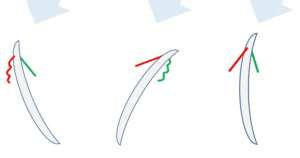
Jib Sail Trim
What is a gale warning.
Email (required) *
The Fastest Boat Bottom Paints: Antifouling for Speed
Whether you're racing your boat or cruising casually, everyone wants to sail faster. Is there a bottom paint that will make your boat sail faster? And is it right for you?
What are The Fastest Boat Bottom Paints? The fastest bottom paints are vinyl or Teflon based hard paints, which can be wet sanded and burnished to a smooth finish .
Maintaining a fast, racing finish with these paints requires more maintenance than a hard copolymer or a softer ablative paint. It is more maintenance, but it can make a big difference in boat speed.
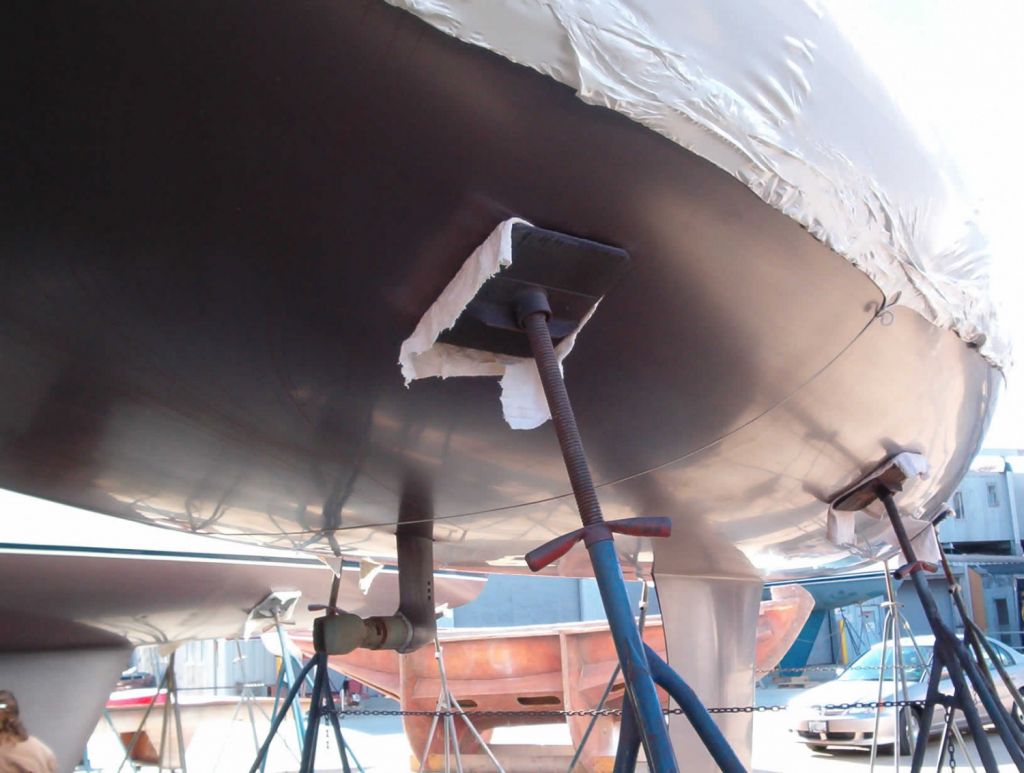
On this page:
What slows you down, bottom preparation is everything, maintaining the finish, alternatives to hard and burnished, how much faster is it, what are your goals, racing vs. cruising.
In a word: friction. Friction causes turbulence and drag
Without requiring a degree in Computational Fluid Dynamics to explain it, a rough bottom is slower. More friction is slower - think about rubbing your hand across a carpeted floor versus a glass table top with a little oil spilled on it. Which is easier? Now imagine you're playing with a toy boat on either surface. If you push the boat, which one will be easier to push? Which might even keep sliding a little if you let it go?
Getting more into the science (still without the degree!), when fluids move over a surface there is a "boundary layer," the layer of fluid closest to the surface skin. When a hard surface moves through a liquid, molecules of the liquid get dragged along with it. This increases "skin friction" and causes drag. The faster something moves, the more drag.
If the flow of molecules in the boundary layer is "laminar", it is evenly spread and more calm. A "turbulent" boundary layer pulls more water with it and causes more friction and drag. A smooth bottom helps maintain laminar flow and reduce turbulence and drag as the boat speeds up.
These forces can be considerable if a boat bottom is not a fair surface, and the effect is more pronounced at higher boat speeds.
Given the power provided from your sails is constant, a boat with less drag will move through the water faster.
Spraying a layer of VC Offshore or Baltoplate on your boat will not make it instantly faster. To get the full benefit of a hard, fast bottom paint job the surface bottom must be prepared with care.
- Old incompatible bottom paint must be stripped. You can't put a Teflon based paint over an ablative or copolymer paint. It won't stay on.
- The bottom should be "faired." The aim is to create a smooth, curved surface with no bumps, dips or ripples. This is labor intensive and requires expertise and a keen eye to fair a hull.
- The bottom should be sanded smooth after fairing and before painting. Even if an orange is round and fair, if you spray paint it you will not end up with a smooth surface. You must start with a smooth surface.
- For a fast finish, spraying gives an even, smoother coating and reduces the amount of sanding time. Rolling hard bottom paint makes little sense because of the increased work from the rough paint application.
- Sanding and wet sanding is a must. Sprayed paint will still feel rough to the touch. For a fast finish sanding and wet sanding with up to 400 grit sandpaper will get results.
- Burnishing is a step even farther than wet sanding, and can give a mirror finish to a well prepared bottom.
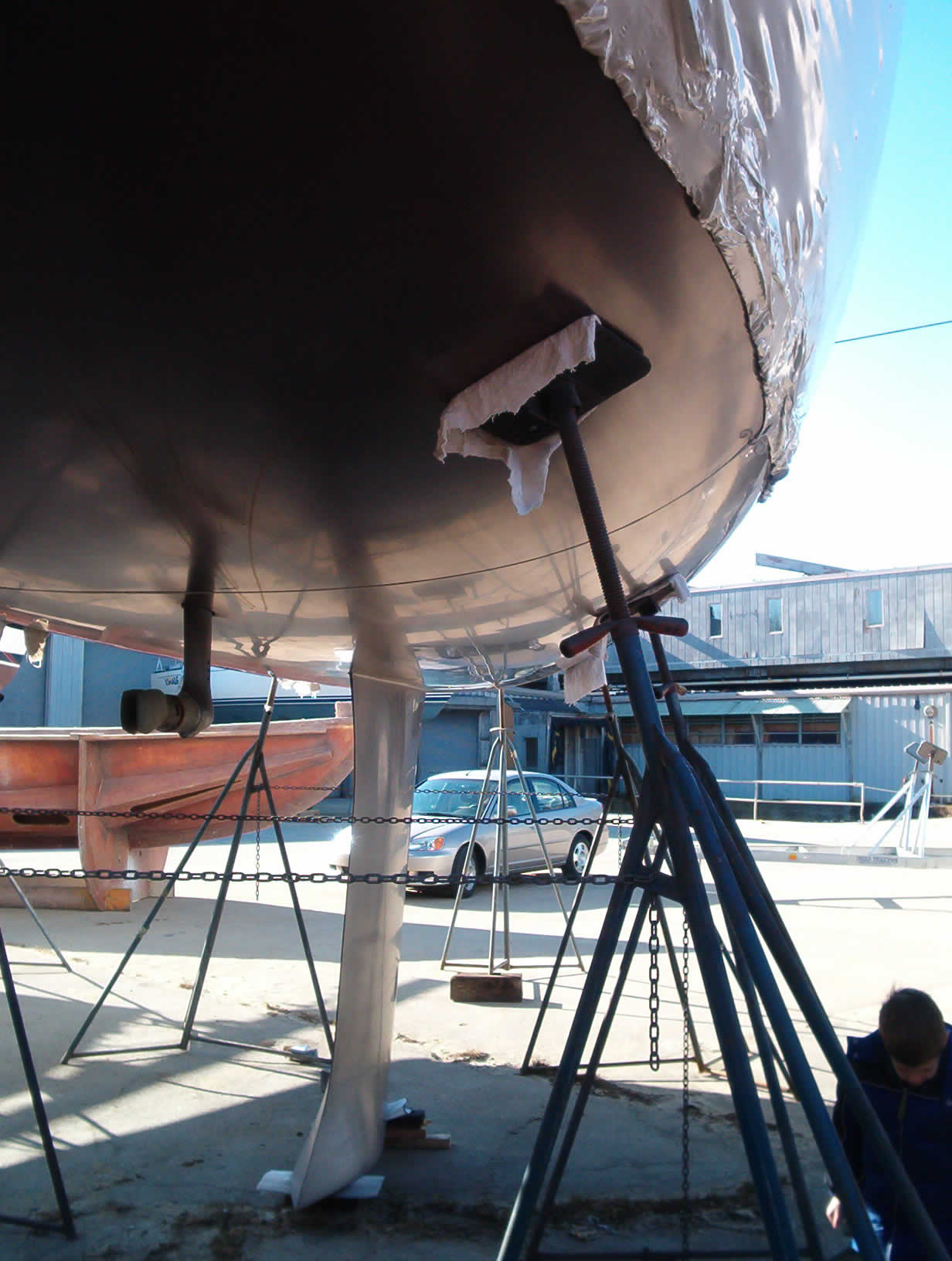
Hard bottom paints designed for racing are not as effective at preventing grown as softer ablative paints or copolymers. They don't hold as much active antifouling, and it doesn't leach out of the paint or get refreshed since the paint doesn't slough off. And wet sanding and burnishing both remove some surface active ingredients.
In high growth areas, a racing finish with require constant maintenance and cleaning. When I raced my last boat, I had a diver come every week to clean the bottom and we dove on the boat ourselves at major regattas. You won't get hard growth quickly, but you will get slime buildup in very little time which can slow you.
You may not get two seasons from a coat of racing paint. If you don't, you'll want to wet sand it before the start of the season to ensure everything is smooth and ready again. The good news is that a properly prepared bottom is easy to re-spray and sand back to a good finish compared to the first time you do it.
What if you don't dive, can't clean your boat regularly, or don't want to pay a diver? Maybe you just want to go faster but aren't a speed-mad racer looking for every 1/10th of a knot speed extra?
Dry sailing for smaller boats is very popular. Fair the bottom and leave it unpainted or put on an underwater epoxy paint. As long as you don't store the boat in the water for more than a couple of days during a regatta there shouldn't be any growth. Most dinghies are dry sailed. Many smaller boats kept at clubs or marinas with a crane have this option, though there may be a cost to haul and launch.
If you stay in the water, a good choice is a hard copolymer paint. These are often referred to as "self polishing," as they smooth themselves with use as the paint sloughs off. Many of these are quite hard and can be carefully sanded to a smooth finish. Since they’re softer, you don’t want to sand through the paint. With proper preparation before painting, a sprayed paint job, and a little sanding, your bottom can be almost as fast as the high maintenance race boats.
Even without the sanding, a good bottom preparation before painting can give you more speed on passages. These paints are popular with long distance cruisers and people who use their boats frequently. You'll lose a little edge if you're racing, but you won't put yourself at the back of the fleet with it.
"What are you getting for your money" is a common question when preparing a boat for racing. The faster bottom and the newest sails won't win races for you if your crew can't tack or gybe and you can't spot wind shifts. You can lose the entire advantage of that quarter knot speed increase with a blown tack or a missed shift.
From personal experience, replacing a rough, coarse, orange-peel looking bottom with a polished and burnished bottom made a big difference. Both in my boat speed, and my wallet. It was expensive to do and expensive to maintain. But the boat was faster, and we were racing competitive regional events. The difference was most noticeable at low speeds and in light air.
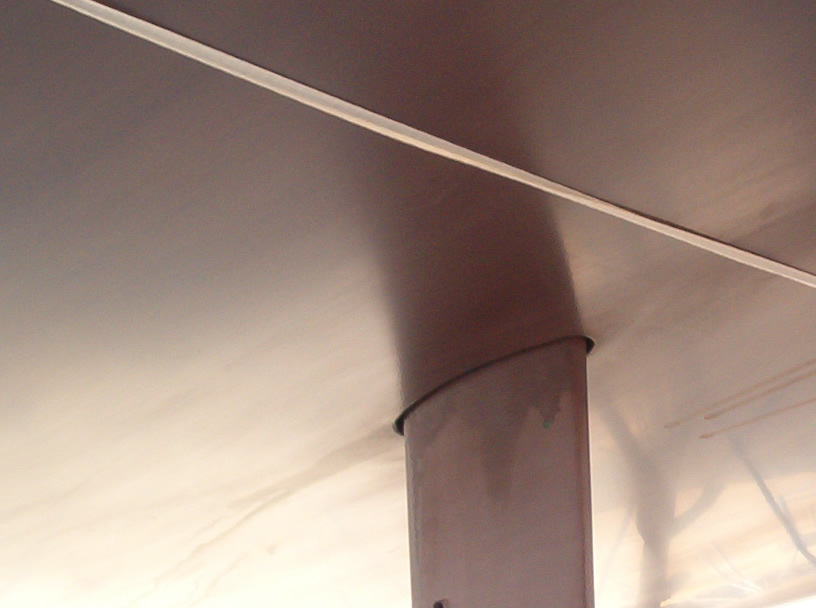
There is not a lot of empirical data about how much faster a burnished Teflon bottom is over a well prepared copolymer paint. So the answer is "yes, it's faster," but with your boat, your budget, and your application there’s no way to predict that you may be 5% or 10% or half a knot faster.
To the casual club racer or cruiser, is it worth the time and money to prepare and maintain the fastest of possible finishes? It may not be; that's a question that only you can answer.
The best choice for a fast bottom comes down to you, your boat, and how you will use it.
- Are you a racer? If yes, is it weeknight club racing, or are you racing at higher level regional events against serious racers?
- If you cruise, how much maintenance are you willing to do to keep every extra fraction of a knot of speed?
- Where do you sail? Some areas have more aggressive growth than others. A sailor in the Great Lakes may get away with a hard bottom paint with less work than a New England coastal racer or a cruiser in the Caribbean.
- What is your budget for bottom preparation and maintenance? Are you willing and able to do some yourself?
- What us the current condition of your bottom? How ready is it for a top quality refinishing?
You will find very few non-racers who take the time and effort to apply the fastest bottom paints. The cost/benefit/effort analysis doesn't show a reasonable payback for what you get.
Most sailors aren't taking their boats to world-class regatta venues, they're taking off for weekends and vacations and maybe doing the club series on Wednesday nights or the annual regatta. Most of those boats are not going through the expense and effort for a competitive racing finish.
On the other hand, if you're racing in a competitive one-design fleet at New York Yacht Club Race Week or the San Diego NOOD Regatta, you can bet almost every boat in your fleet will have a smooth, wet sanded finish.
Leave a comment
You may also like, do i need to antifoul (bottom paint) my boat - sometimes.
Any time you buy a new boat, you get a work list as long as your arm. Bottom paint is expensive, toxic, and can be difficult to apply. It's an easy task to want to …

41 Sailboat Cruising Essentials for Long Trips

How to Calculate Outboard Motor Size for Sailboats

What Are The Fastest Sailboats? (Complete List)

Last Updated by
Daniel Wade
August 30, 2022
Whenever you are looking into buying a sailboat, they often tell you how fast it can go. So naturally, customers want to know, what are the fastest sailboats?
Depending on the model and brand of a sailboat, in addition to the right conditions out on the water, this answer can vary. But which sailboats are known to be the fastest?
Each style of sailboat has its advantages that make it fast. The V.O 60, X-Yachts X4.0, and Beneteau Oceanis 30.1 are great examples of fast monohull boats. For multihull boats, Rapido 60 (Trimaran), Dragonfly 40 (Trimaran), and ICE Cat 61 (Catamaran) are some of the fastest in that category.
The list can go on when you are talking about specialized performance boats, foiling boats, and even windsurfers. However, the most common sailboats that people can relate to are either monohulls or multihulls.
According to sailing experts, fast can mean 12 knots if you are only used to going about half that speed. But when you speak about the fastest sailboats, they usually top around 30 knots or more out on the water.
Table of contents
What Makes a Sailboat Fast?
A lot of variables come into play to help a sailboat reach its maximum potential for going fast. While the person running the boat is the one responsible for making it go fast, the weather conditions and type of boat have to be good in order to reach top speeds.
If a boat is not designed to handle rougher conditions, you will struggle with performance in those situations. If you have a boat that is built for anything nature throws at it, you might have better stability but considerably less speed even in good conditions.
Weight and Power of Boat
If you were to have two objects with different weights and put the same amount of force on them, the lighter object moves faster. This is why lighter boats move quicker than heavier boats.
So if you were to put two boats at one end of a race head to head with the same conditions of wind and sailing area, the lighter boat wins. This is because the lighter boat is able to gain speed quickly due to the less weight it holds.
The weight of the hull is only one part of the equation, as the mast can hold a lot of weight too. If there is a way to reduce the weight on the boat, you will have a better chance at going faster.
This is why fast boats typically are made out of materials such as carbon fiber or fiberglass. If the boat is a multi-hull without a keel, this also cuts down on weight.
Friction and Wetted Surface
Water adds a ton of friction to the boat, so a fast boat needs to be able to cut through it efficiently. In addition, some boats have finely polished exteriors to help glide through the water and reduce drag.
Depending on the shape of the hull and how much wetter surface it has can greatly affect the amount of drag it has. For example, displacement hulls change as the boat heels in the water.
For multihulls, these lift the hull out of the water slightly to reduce drag. Hydrofoils are another example that lifts the entire boat out of the water to greatly reduce the wetted surface.
Sail Area and Wind
The bigger the sails are on a boat does not necessarily mean the boat will be the fastest. While the sailing area is critical for speed, it has to match the sailing area to displacement ratio.
The sail area needs to be more about the lift of the sails rather than the size of them. If the proper sails are there, then the boat should be able to reach its maximum potential if the wind conditions are right.
Fastest Sailboat Types
The type of sailboat makes a big difference in speed since it has different characteristics. These include HP monohulls, catamarans, and trimarans.
Each boat type will have a unique position in the water, making it potentially faster than another type. If you want to compare boats in perfect conditions, you can see how one stacks up to another.
HP Monohulls
HP monohulls gain a lot of their speed by being powered by a motor. While they have the capability to sail using the wind, they have the convenience of a motor to help push them along.
So the outboard motor needs to be able to handle the weight of the boat efficiently in order to help reach top speeds. A lot of larger boats need to be pushed along by multiple motors.
Monohulls in general are favored by many sailors since they have that traditional look to them. They also happen to be very common, but multi-hulls are making things competitive in the market.
Catamarans do not have a keel and it helps reduce the weight of the boat. They also displace less water compared to a monohull. However, not all catamarans go fast.
Depending on the catamaran and its capabilities, there is some that glide effortlessly on the water. These ideally work best in good conditions but will be a bumpy ride if the water is a little choppy.
They offer one of the safest rides on the water and are essentially unsinkable due to their design. They spread out their weight over a larger area on the water, making them more stable than a monohull.
In addition, the living space on a monohull is huge compared to a monohull. With about a 40-foot catamaran, it has around the same living space as a 60-foot monohull.
Trimarans are another unique style of sailboat similar to a catamaran. They have three hulls side by side instead of two, making it very stable.
They also have a wide sail area and make for quick spurts out on the water. However, they also need good conditions to operate their best to move fast.
These displace water similar to a catamaran and are more stable. They also tend to go faster in the right conditions than a catamaran.
Both catamarans and trimarans generally have shallow drafts and can be beached. In coastal waters, monohulls have to watch out for their draft since they have a keel.
Fastest Monohull Sailboats
Some of the fastest monohull sailboats have unique characteristics that set it apart from other monohulls. These include sail area, weight, and wetted surface.
The beauty about monohulls is the keel, which has its advantages in tougher conditions. If you were to race a monohull against a multihull in moderate conditions, the monohull has a better chance at navigating through the water due to the keel and potentially going faster. The keel allows the boat to heel from one side to the other and come back to the center.
The Volvo Ocean 60 is one of the fastest monohull sailboats you can find. It is a perfect example of an offshore sailboat that is usually handled by four professional sailors and eight mates on deck.
This boat is roughly 64 feet long and sits about 12 feet in the water. The fastest that these boats go ranges around 35 to 40 knots, but it takes the right conditions and a little bit of patience for that large of a boat.
2. X-Yachts X4.0
The X4.0 yacht was a winner of the European Yacht of the Year award in 2020. It is a fairly new boat design, as it debuted in 2019.
This 40 foot luxury yacht is a top-of-the-line performance cruiser that is built for speed and is lightweight. Sitting about eight feet in the water, this boat can reach up to 10 knots or potentially more with the right conditions. You can quickly reach these speeds due to its size and weight.
3. Beneteau Oceanis 30.1
The Beneteau Oceanis 30.1 is another great example of a power cruising yacht that is new to the scene in 2019. At around 31 feet, it is one of the smaller yachts on the list but packs a powerful punch in performance and speed.
The max draft of this one is just shy of 6.5 feet and it received the Best Performance Cruiser in 2020. While this one, in particular, is built more for luxury and comfort, you can easily see top speeds ranging from 7.5 to 10 knots.
4. Santa Cruz 52
The Santa Cruz 52 is a perfect combination of a lightweight sloop and a blue water racer. At 53 feet long and a draft of nine feet, this boat is a beauty to see go fast.
These are often compared to the original Swan sailboats around the same length, as far as the class and style of the boat. In good conditions, they top around eight knots on a good day.
The Amel 60 is another beauty of a luxury yacht cruiser spanning almost 60 feet in length and nearly an eight-foot draft. This boat began production in 2019 and received the 2020 European Yacht of the Year Luxury Cruiser award.
With a reliance on the engine, you can push the boat a little harder in good conditions to gain more speed. While topping out the engine, you are looking at anywhere between eight and 10 knots.
Fastest Multihull Sailboats
Multihull sailboats are generally faster than monohull sailboats due to their lack of extra weight. These are up to 30 percent faster in that situation.
The only downside is that if you want to reach those maximum speeds, you cannot add a lot of extra weight to the vessel. So for sailors that want to utilize a multihull’s full potential, they need to consider what they bring on board and how many people they have.
1. Rapido 60 (Trimaran)
The Rapido 60 is one of the fastest multihulls out there for its size. At nearly 60 feet in length and almost 11 feet in draft, this unsinkable trimaran can speed up to 25 knots.
These were first built in 2015 and are a popular trimaran to look at if you are wanting the space. In the right conditions, the manufacturer says you can easily reach 30 knots if not more.
2. Dragonfly 40 (Trimaran)
The Dragonfly 40 is one of the few 40-footers out there that you can operate shorthanded. While it typically accommodates six to eight people, the boat’s design allows it to be easily handled.
According to the manufacturer, they claim it can reach 24 knots. Assuming the conditions are perfect, it could potentially reach more.
3. ICE Cat 61 (Catamaran)
The ICE Cat 61 is just a tad over 61 feet long and is one of the more beautiful catamarans you will ever see. For its size and design, it is impressive to see it reach top speeds.
With just the motors alone, you can easily reach 13.5 knots. If all the right conditions are in play, you can expect to reach up to 25 knots.
4. SIG45 (Catamaran)
The SIG 45 is a 45-foot racing cruiser that can comfortably hold about six people. With features like low dragging bows, carbon fiber material found in spars and bulkheads, and around 1,400 square feet of sailing area to play with, you can expect top performance all the way around.
It is estimated that this boat can safely top out around 20 knots. However, there is room for more knots in the best conditions.
5. Lagoon 67 S (Catamaran)
The Lagoon 67S is one of the rarest catamarans you will ever see. There were only four built from 1993 to 1995 by Jeanneau Technologies Avancées and are a gorgeous sight to see.
Regardless of the age of this boat, it still flies in the right conditions like the newer catamarans you see today. You can expect to reach a little over 20 knots for this 67 footer and about five feet of draft.
Related Articles
I've personally had thousands of questions about sailing and sailboats over the years. As I learn and experience sailing, and the community, I share the answers that work and make sense to me, here on Life of Sailing.
by this author
Best Sailboats
Learn About Sailboats
Most Recent

Affordable Sailboats You Can Build at Home
September 13, 2023

Best Small Sailboat Ornaments
September 12, 2023
Important Legal Info
Lifeofsailing.com is a participant in the Amazon Services LLC Associates Program, an affiliate advertising program designed to provide a means for sites to earn advertising fees by advertising and linking to Amazon. This site also participates in other affiliate programs and is compensated for referring traffic and business to these companies.
Similar Posts

Best Small Sailboats With Standing Headroom
December 28, 2023

Discover the Magic of Hydrofoil Sailboats
December 11, 2023

Best Bluewater Sailboats Under $50K
Popular posts.

Best Liveaboard Catamaran Sailboats

Can a Novice Sail Around the World?
Elizabeth O'Malley
June 15, 2022

4 Best Electric Outboard Motors

How Long Did It Take The Vikings To Sail To England?

10 Best Sailboat Brands (And Why)
December 20, 2023

7 Best Places To Liveaboard A Sailboat
Get the best sailing content.
Top Rated Posts
© 2024 Life of Sailing Email: [email protected] Address: 11816 Inwood Rd #3024 Dallas, TX 75244 Disclaimer Privacy Policy

How to Make your Boat Faster – 9 Ultimate Tips!
There are many reasons why you might want to make your boat faster. Maybe you’re a competitive racer and you need an edge on the competition. Maybe you just like to speed around on the water for the fun of it. Or maybe you need to get from one side of the lake to the other as quickly as possible to avoid a storm.
Whatever your reason, there are ways that you can make your boat go faster. One of the easiest ways to do this is by adding a larger engine. But, if you’re like me and don’t have any experience with engines, you might be worried about how to go about choosing the right engine for your boat. The good news is that there are a few different things to consider when choosing an engine.
How can you make your boat faster effectively
When it comes to boating, there are three pieces of equipment that are key: the engine, the propeller, and the hull. It’s important to get the right size and type of engine for your boat, as well as the correct propeller and hull. If you don’t have the right equipment, your boat won’t run properly and you could even damage it. We discuss various ways you can speed up your boat in water which are given below:

1. Optimize the engine
Sailing enthusiasts know that having a fast boat engine is key to a great sailing experience. Not only does it make the boat move faster, but it also makes it more responsive to commands from the captain. There are many ways to optimize a boat engine for speed, and each one should be tailored to the specific needs of the vessel.
The best way to speed up your boat engine is by optimizing it. This can be done by adjusting the carburetor, the timing, and the fuel mixture. You can also improve performance by installing a new exhaust system or a racing cam. If your boat is equipped with a high-performance engine, you can also increase speed by adding a supercharger or turbocharger.
2. Choose the right propeller
When it comes to choosing a propeller for speed, there are two main factors to consider: blade shape and blade pitch. The blade shape affects the amount of thrust that is created by the propeller, while the blade pitch affects how much power is put into the water.
In general, a higher blade pitch will create more power but will also result in lower speeds. Conversely, a lower blade pitch will create less power but will produce higher speeds. When choosing a propeller for speed, it is important to find the perfect balance between blade pitch and speed.
3. Weight distribution
There are many factors that determine how fast a boat goes. Weight distribution is one of them. When the weight of the boat is evenly distributed, it moves faster through the water. This is because there is less resistance on the front and back of the boat.
If you have too much weight in the front, it will make the boat sluggish and cause it to slow down. The same is true for having too much weight in the back. When you distribute the weight evenly, it helps to create a more streamlined shape and increases speed.
4. Hull design and construction
There are many things that you can do to speed up your boat. One of the most important is to have a well-designed and well-constructed hull. The shape and construction of your hull can have a significant impact on how fast your boat moves through the water. You want to make sure that you select a hull design that is both efficient and stable.
You also need to make sure that your boat is built with high-quality materials and construction techniques. If you take these steps, you should be able to speed up your boat significantly.
5. Add a spoiler
Spoiler boats are a new way to make your boat faster. By adding spoilers to the back of your boat, you can create more drag and increase the speed of your craft. This is a great option for racers or anyone who wants to get from point A to point B as quickly as possible. The best part is that adding spoilers is a relatively inexpensive way to make your boat go faster. You can find spoiler kits at most marine stores, and they are easy to install.
6. Streamline the boat
Streamlining your boat can speed up your boat. There are many ways to streamline a boat and each boat is different. Some common ways to streamline a boat are by: removing unnecessary items from the boat, adding a fin or keel, and by making the boat more aerodynamic. Streamlining the boat can help the boat move through the water faster and with less drag.
7. Clean the bottom of the boat
If you’re looking to speed up your boat, cleaning the bottom can be a great way to do it. Boat bottoms can become clogged with debris and algae over time, which can slow your boat down. Removing this build-up can help you move more quickly through the water.
Cleaning the bottom of your boat is a pretty simple process. You’ll need a bucket, some warm water, and some dish soap. Fill the bucket with warm water and add a few drops of dish soap. Use a sponge or cloth to scrub the bottom of your boat clean. Rinse off the boat when you’re done.
Cleaning your boat’s bottom on a regular basis will help keep it moving fast and smoothly through the water. It only takes a few minutes to clean it, and it’s well worth the effort!
8. Use the right fuel
Gasoline engines are generally faster than diesel engines, but diesels are more efficient. So it’s important to choose the right fuel for your boat in order to get the most speed for your money.
Gasoline is a good choice for boats that need to move quickly, such as racing boats or water skiers. It also works well for smaller boats that need good acceleration. Diesel engines are better for larger boats that need to travel long distances, as they use less fuel and produce less noise than gasoline engines.
9. Materials of boat
Boat materials can speed up your boat. Different materials will create different amounts of drag on the boat. In general, the less drag there is, the faster the boat will travel. There are a variety of factors to consider when looking for a material that will make your boat go faster.
Choosing a lightweight material can help reduce drag and make your boat go faster. Fiberglass is often used because it is lightweight and durable. It also holds up well in rough water conditions. Other materials that can be used to speed up your boat include metal and carbon fiber. Metal is a good choice for boats that need extra strength, while carbon fiber is often used in racing boats because it is very lightweight and strong.
Why most of the longer boats are faster
There are many reasons why a longer boat is often faster than a shorter one. For one, a longer boat has more surface area, which means it can move more water and create more drag.
Additionally, a longer boat tends to be narrower, which makes it easier to cut through the water. Finally, a longer boat typically has a lower center of gravity, making it less likely to flip over.
What is the average speed of a boat should be
When it comes to boat speed, there is no one right answer. It depends on the type of boat, the weight of the boat and cargo, the water conditions, and the desired destination. However, a good average speed for most boats is around 10 knots.
This allows for a comfortable ride while still moving along at a good clip. Keep in mind that while traveling at high speeds is thrilling, it can also be dangerous. Be sure to always obey maritime laws and use common sense when sailing at high speeds.
In conclusion, there are many ways that you can make your boat faster. While some methods may be more expensive than others, they can all help you reach your goal of a faster boat. By following the tips in this article, you can work towards making your vessel as speedy as possible.
If you have any questions about how to go fast, or the methods listed above, feel free to contact us. We are always happy to help!
You May Also Like
- 6 Differences between Bass Boat and Fishing Boat
Related Posts

8 Major Difference Between Boat And Ship
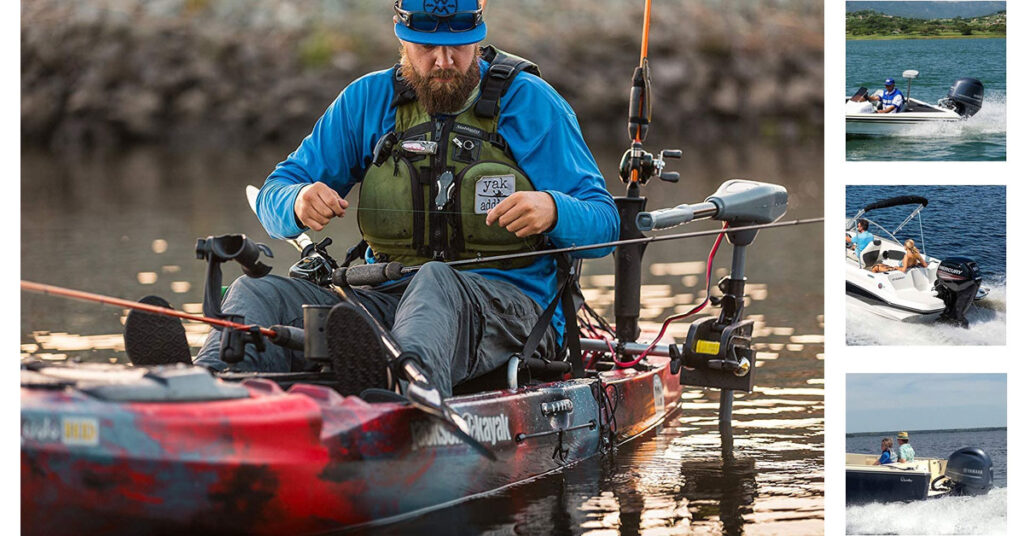
How much does a Boat Motor Cost
6 thoughts on “how to make your boat faster – 9 ultimate tips”.
Pingback: 6 Differences Between Bass Boat And Fishing Boat
Pingback: 8 Differences Between Marine And Car Engines
Pingback: How To Select A Propeller For A Boat - Buying Guide!
Pingback: 5 Advantages Of Hydraulic Power Steering System Of Boat
Pingback: Ultimate Guide Of Boat Jack Plates With Some Tips
Pingback: What Is A Transducer On A Boat? - Its Benefits & Some Tips
Leave a Comment Cancel Reply
Your email address will not be published. Required fields are marked *
Save my name, email, and website in this browser for the next time I comment.

Boating Basics Online is reader-supported. When you buy via our links, we may earn a commission at no cost to you. Learn more
How to Get Your Boat on Plane Faster? – 5 Simple Ways
Written by J. Harvey / Fact checked by S. Numbers
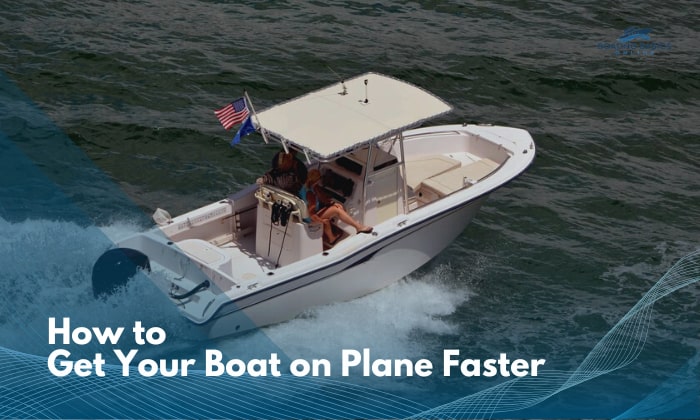
Assuming the conditions are right and the situation calls for it, any boat operator will not hesitate to plane a boat that’s able to do so. Who would willingly say no to better fuel efficiency and stability, faster speed, and that undeniable thrill?
I bet you want to know how to get your boat on plane faster because, simply put, your boat takes too long plane.
This guide’s got your back because it details every technique that has worked for me and plenty of other boat operators.
Table of Contents
1. Make Sure the Weight of the Boat’s Load is Correctly Distributed
2. check the prop’s pitch, 3. look for any problems with the engine, 4. use the right trim tabs, 5. consider a hydrofoil, other tips to get a boat up on plane better, how to help your boat climb up on plane quicker.
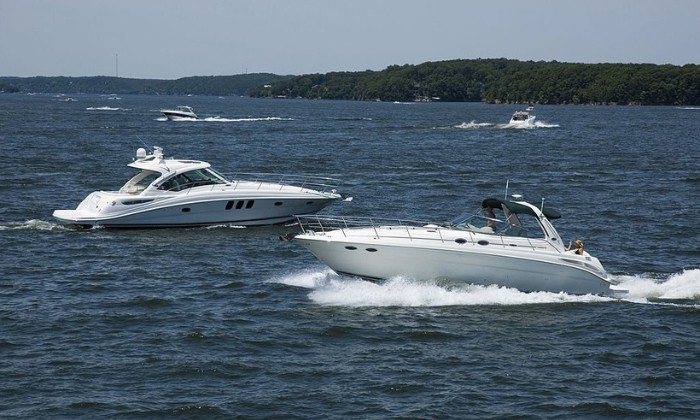
Before you start, check if your boat is able to plane. Can you confirm that the motor’s not underpowered for the cargo it will be carrying? If your vessel’s inboard motor only has 15 to 50 horsepower but carries a hefty load, I’ll be surprised if the boat manages to plane at all.
Now, assuming it ticks all the checkmarks for planning, yet your boat struggles to get on plane still, that’s the best time to start trying these workarounds and improvements.

Optimal weight distribution is one strategy anyone with a planing problem should try since it only takes a couple of tests to determine where to put most of its load.
Obviously, you want to balance the weight better. It’s generally recommended to place heavier passengers and objects closer to the bow. And, of course, make sure you distribute weight properly.
Ideally, you’d want neither the bow nor the propeller to dig too much into the water. Try to keep most of the weight off the stern, where it will begin to affect the boat’s acceleration. A boat sluggish on take off is one of the tell-tale signs of that.
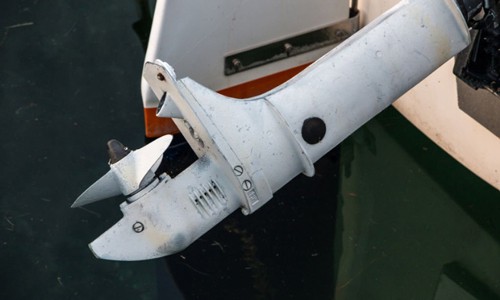
A buddy of mine suggested this, and I’m glad I decided to look into it because the difference was clear as day the moment I upgraded the prop of my center console.
It turned out the propeller’s pitch just wasn’t low enough. By incorporating a lower-pitch prop, it was finally able to accelerate smoothly enough for the boat to plane out quicker.
As the ideal prop’s pitch varies from one boat to another, it’s best to check the manufacturer’s guidelines.
Another rule of thumb for picking the right prop for getting a boat on plane is that 4-bladed models are generally more suited for the task. And keep in mind that a damaged prop will lower your chances of getting the boat to plane.
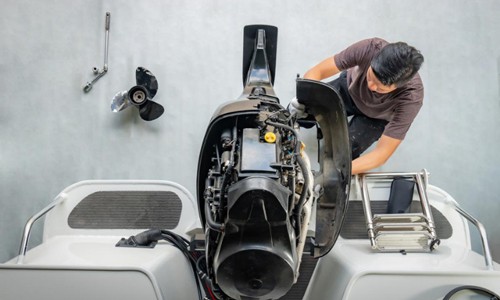
I can safely say that most boats cannot operate optimally if they have spark plug issues, cylinder misfires, or worn-out engines. So, have a mechanic look over your boat to make sure your vessel doesn’t have these problems.
While you’re at it, give the engine’s height a lookover. It may not be as impactful as weight, but we can’t deny that it influences drag and the quality of water flow on the prop.
Remember that power available to the boat is also one of the most important factors in getting it on plane, not just how you help it climb on plane with trim tabs. Although they’re one area worth looking at as well, as proven by the next step.
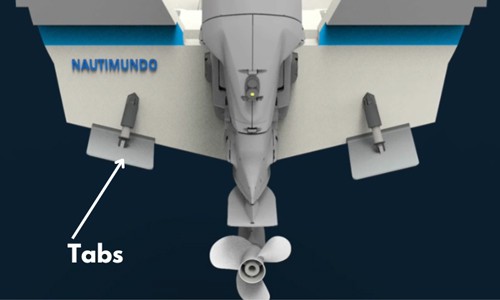
Aim for trim tabs that will help you achieve this particular requirement. As a general rule, every foot of boat length calls for a 1-inch span of trim tab per side. And if your boat is tall enough, pick a 9-inch chord option.
If you’re not that familiar with boating, it’s best to choose SmartTabs, which can deploy automatically. Otherwise, you can go for options that give you full control, such as Benett or Lenco Trim Tabs.
Trim tabs essentially reduce drag and create lift. What’s even better is that they even allow watercraft to get up on AND stay on plane, even at a lower speed. Some are even self-leveling, thus, sparing you from manual adjustments.
One caveat, though: If you have an outboard motor, having tabs upstream of it may cause some unwanted cavitation to form. Consider installing smaller trim tabs, but don’t overdo them.
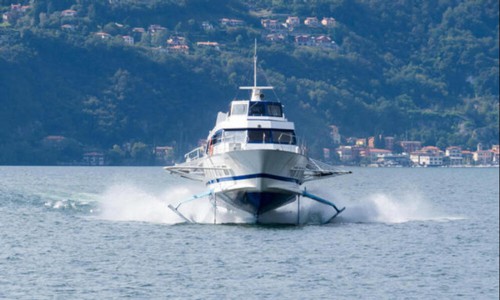
I usually only recommend this when I’m sure that the boat will benefit from it. You have to know that the underlying problem will be something that hydrofoil will directly solve, in short. If your boat already has the right prop and power, you likely won’t need this.
If not, a hydrofoil can increase the cavitation plate’s size and boosts its angle of attack. Overall, it helps keep drag low and lets the vessel accelerate much quicker.
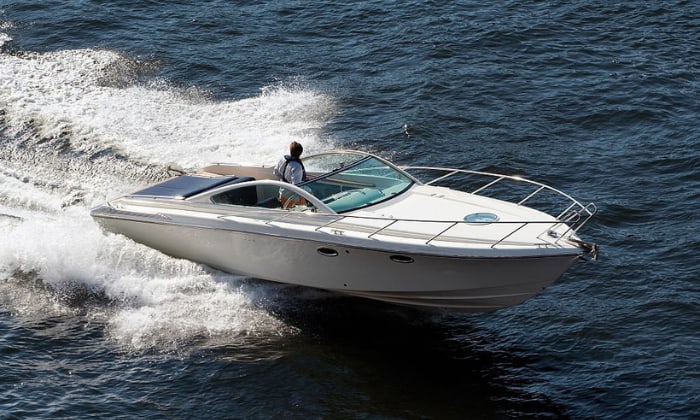
- Take the time to experiment with various trim settings to pinpoint the best angle for acceleration for your particular boat. I can’t stress the importance of optimal trimming when it comes to this topic.
- Practice regular maintenance of the engine. Have it tuned and serviced based on a strict schedule, for example, so you’ll always stay on top of potential mechanical problems.
- Keep in mind that a boat’s planing ability is innately tied to its performance.
- A cracked hull will make the boat sit too low on the water, which ultimately creates more drag and gets in the way of the boat’s planing.
- Align your boat with the water currents and winds if possible, as this will reduce drag and make it easier for your vessel to accelerate.
Based on the facts above, it’s clear that most of the problems related to this topic are tied to a boat’s ability to pick up speed. Therefore, optimal acceleration should be one of your main priorities to know how to get your boat on plane faster.
Of course, there’s also the matter of having a lower-pitch prop, ensuring the engine’s in top shape, knowing your vessel’s capabilities, etc. At the end of the day, this topic encourages you to further expand your boating knowledge and seamanship.

“My intention from the first day establishing Boating Basics Online is to provide as much help as possible for boaters who want to experience a first safe and convenient trip. So feel free to join us and share your beautiful journeys to the sea!”

How Fast Do Boats Go in MPH? A Quick Guide to Boat Speeds!
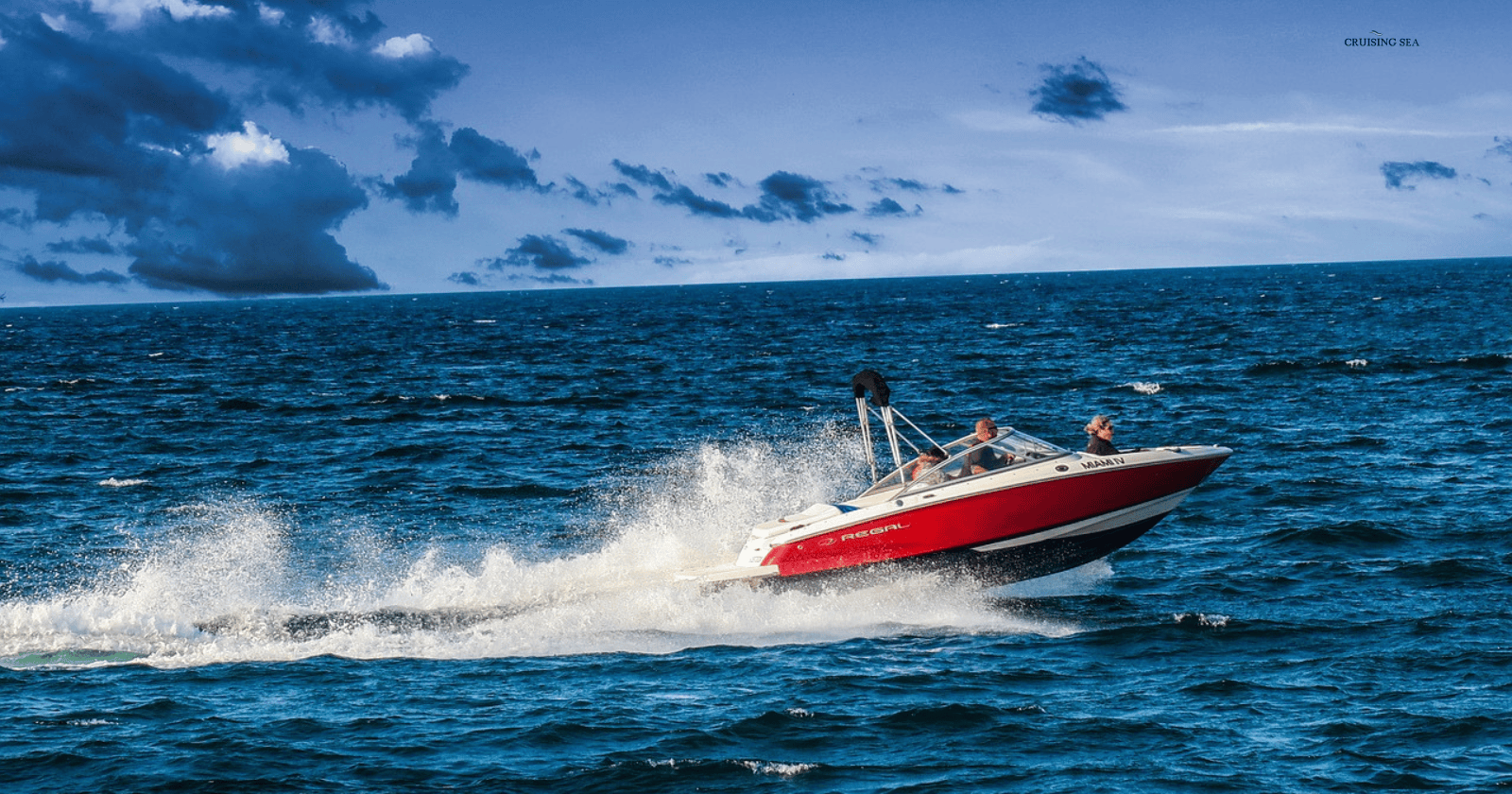
Ever wondered how fast boats can zip across the water? You’re not alone! Many people are curious about the speed capabilities of different watercraft. From leisurely pontoons to high-powered speedboats, there’s a wide range of speeds these vessels can achieve.
The answer might surprise you. Boat speeds can vary dramatically, from as slow as 5 mph to over 100 mph in some cases. It all depends on the type of boat, its design, and the power of its engine.
Want to know more about how fast your favorite boats can go? Stick around as I dive into the exciting world of boat speeds. You’ll discover the factors that affect a boat’s speed and learn about some of the fastest boats on the water today.
Table of Contents
Boat Speed – All You Need to Know
Boat speed varies widely depending on the type of vessel and its purpose. Knowing how fast different boats can go helps you pick the right one for your needs.
How Do We Measure Boat Speed?
Boat speed is often measured in knots. One knot equals one nautical mile per hour, which is about 1.15 miles per hour. Most boats use knots because it’s a global standard for water and air travel.
Speed boats can zoom along at 50-80 mph. Racing boats might even top 100 mph. But not all boats are built for speed. A typical sailboat cruises at 4-6 knots (about 5-7 mph). Motorboats usually go faster, with many reaching 20-30 mph.
Your average pontoon boat putters along at 18-25 mph. That’s plenty fast for relaxed lake days and water activities.
What Factors Determine a Boat’s Speed on Water?
Many things affect how fast a boat can go. The shape of the hull is key. A flat bottom helps boats plane and go faster. V-shaped hulls cut through waves better but may be slower.
Engine power matters, too. More horsepower usually means more speed. But it’s not just about raw power. The boat’s weight and how it’s loaded also play a big role.
Wind and waves can slow you down or speed you up. Calm waters let boats reach top speeds. Rough seas tend to slow down boats.
Boat design aims to balance speed with stability and comfort. Fast boats often sacrifice some comfort for performance. Slower boats might offer a smoother, more relaxed ride.
Are All Boats Built For Speed?

No, not all boats are built for speed. Boats come in a variety of shapes and sizes, each designed for specific purposes , which affects their speed . Let’s look at some common boat types and their typical speeds .
Leisure Boats: Pontoons and Cruisers
Pontoon boats are great for relaxing on the water. They usually travel at 15-25 mph. Some can reach up to 36 mph with a powerful engine. Cruisers are bigger boats meant for longer trips. They typically go 16-30 mph. Luxury yachts can hit speeds of 50 mph or more.
These boats are built for comfort, not speed. You’ll find plenty of space to lounge and enjoy the scenery. If you’re not in a hurry, these are perfect for a day on the lake or a weekend getaway.
Speed-Focused Motorboats and Racing Boats
If you’re after speed, motorboats are the way to go. Bass boats and ski boats can zip along at 60 mph or more. Center console boats, popular for fishing, can also reach these speeds.
Racing boats take it to another level. They can go over 100 mph! Some use jet engines instead of propellers to achieve mind-blowing speeds. The fastest boat ever recorded hit 317.6 mph back in 1978.
Sailboats and Wind-Powered Speed
Sailboats rely on the wind, so their speed can vary. On average, they move at about 8 mph. But don’t let that fool you – racing sailboats can go much faster.
With the right wind and skilled sailors, racing sailboats can reach 30 mph or more. The fastest sailboats use special designs to lift part of the boat out of the water, reducing drag.
Specialty and High-Performance Boats
Some boats are built purely for speed and thrills. Cigarette boats, also called go-fast boats, can hit speeds of 90 mph or more. They’re long and narrow, cutting through the water with ease.
Jet skis, while not technically boats are worth mentioning. These personal watercraft can zoom along at 65-70 mph. Some high-performance models can even break 80 mph.
For sheer speed on the water, nothing beats hydroplane racing boats. These skim across the surface and can reach speeds over 200 mph!
What Factors Affect Boat Speed?
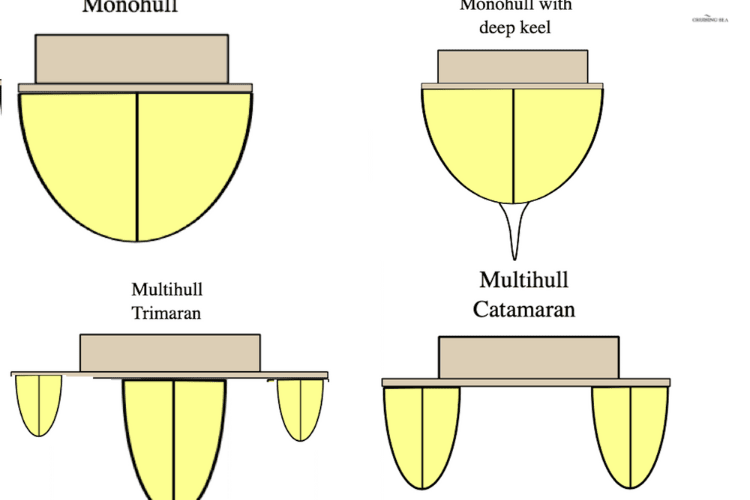
Boat speed depends on several key factors that work together. Let’s look at the main elements that affect how fast a boat can go.
Engine Power and Propulsion
The engine is the heart of a boat’s speed. More powerful engines can push boats faster through the water. Horsepower is a key measure – the more horses, the more zoom!
Most recreational boats have engines ranging from 90 to 300 horsepower , while high-performance boats might pack 1000 horsepower or more.
Propellers play a big role, too. They turn engine power into forward motion. The size, pitch, and number of blades all affect speed. A well-matched prop can boost your top speed by several mph.
Fuel type matters as well. Gas engines are common in smaller boats, while diesel powers many larger vessels. Each has pros and cons for speed and efficiency.
Weight and Design Considerations
A boat’s weight greatly impacts its speed. Heavier boats need more power to move quickly. That’s why racing boats are often made of lightweight materials like fiberglass or carbon fiber.
The shape of the hull also affects speed. A sleek, streamlined design cuts through water more easily. This reduces drag and allows for higher speeds.
Boat length plays a part, too. Longer boats can often reach higher top speeds than shorter ones of the same type. But they might take longer to get up to speed.
Load is another factor. A boat packed with gear and people won’t go as fast as when it’s lightly loaded. So, if you’re after speed, pack light!
Hull Types and Hydrodynamics
The hull is the bottom of the boat, and its shape is crucial for speed. There are two main types: displacement hulls and planing hulls.
Displacement hulls, like those on sailboats, push through the water. They’re slower but more stable. Top speeds are usually under 10 mph.
Planing hulls are built for speed. They rise up and skim across the water’s surface. This reduces drag and allows for much higher speeds. Many speedboats use this design.
Some boats have a mix of both types. These “semi-displacement” hulls offer a balance of speed and stability.
Your Key to Safe Boating: Speed Limits and Best Practices
Boating speed limits are important for two main reasons: They keep everyone safe and protect the environment. Boating speed varies based on location and boat type. Let’s look at key rules and practices for responsible boating.
Navigating Speed Restrictions
Most lakes and rivers have speed limits ranging from 5 to 45 mph. No-wake zones require you to go slow enough not to create a wake, usually under 5 mph. Nearshore, docks, or swimmers, stick to idle speed.
Watch for posted speed limit signs on buoys or shorelines. Some areas have different limits for day and night. Larger bodies of water may have higher speed zones farther from shore.
Don’t exceed 35 mph in designated speed zones. Breaking speed limits can result in fines or loss of boating privileges. Slow down in foggy conditions or heavy boat traffic for safety.
Promoting Safe Boating Practices
Always wear life jackets and have safety gear on board. Check weather forecasts before heading out. Tell someone on land your plans and expected return time.
Avoid alcohol while boating . It slows reactions and impairs judgment. Stay alert and watch for other boats, swimmers, and obstacles in the water.
Slow down for better stability when towing water skiers or tubes . Make wide, gradual turns. Have a spotter watch the person being towed.
Reduce speed in rough water to prevent damage to your boat. Going slower also improves fuel efficiency. Take a boating safety course to learn more about safe practices on the water.
Which Boats Have Broken the Speed Barrier?

Boats have pushed the limits of speed on water for decades. From sleek racing vessels to powerful cigarette boats, engineers and daredevils alike have chased ever-faster speeds.
Fastest Boats in History
The current world record speed for a boat is 317.58 mph, set by Ken Warby in the Spirit of Australia in 1978. This incredible feat has stood for over 45 years. Warby’s boat used a jet engine to achieve its mind-blowing speed on the water.
More recently, other boats have come close to this record:
- The Quicksilver hit 278 mph in 2014
- The K777 team reached 261 mph in 2004
These speeds are far beyond what most boats can achieve. Even high-end racing boats typically top out around 170-180 mph.
Technological Milestones
Boat speed records have been driven by advances in design and power. Early speed records used propeller-driven wooden boats. The 1930s saw a shift to aircraft engines, pushing speeds over 100 mph.
Key innovations include:
- Hydroplanes: These “skimmed” the water’s surface
- Jet engines: Allowed for massive power increases
- Composite materials: Lighter, stronger hulls
Today’s fastest boats use a mix of aerospace tech and marine engineering. They often use:
- Computer-aided design
- Wind tunnel testing
- Advanced propulsion systems
Boat Speed: Worth the Fuel and Impact?
Boat speed affects fuel use and the environment. Faster speeds often mean higher costs and more impact on nature.
Fuel Consumption and Cost
The faster you go, the more fuel your boat burns. A small speedboat might use 20-30 gallons per hour at top speed. Bigger boats can guzzle even more. Slowing down can cut fuel use by half or more.
Fuel costs add up fast. With marine fuel prices often higher than regular gas, a day of fast boating can be pricey. You’ll save money by cruising at lower speeds.
Some newer boats have fuel-saving tech. Things like better hull designs and more efficient engines help. But speed is still the biggest factor in how much fuel you use.
Impact of Boating on the Environment
Fast boats can harm the environment in several ways:
- Noise pollution: Loud engines disturb wildlife and other boaters.
- Wake damage: Big waves from fast boats can erode shorelines.
- Fuel spills: More fuel use means a higher risk of spills.
- Emissions: Faster speeds create more air pollution.
Slower boating is gentler on nature. It reduces your carbon footprint and helps protect marine life. Many areas now have speed limits to protect the environment.
You can reduce your impact by:
- Using cleaner engines
- Avoiding shallow areas
- Properly maintaining your boat
- Following local speed rules
How Has Boating Shaped Our World?
Boating has shaped leisure, sports, and even historical events. It’s deeply woven into many cultures around the world, from casual weekend outings to high-stakes smuggling operations.
Boat Usage in Leisure and Sports
You’ve probably seen recreational boats zipping across lakes or cruising along coastlines. These vessels are a big part of how people relax and have fun on the water. Leisurely cruises let you soak up the sun and enjoy scenic views. Water activities like wakeboarding and water skiing are popular, too.
Bass boats are a fisherman’s best friend, designed for catching those prized fish. Water sports enthusiasts love speedboats for their thrills. Kayaks and canoes offer a quieter way to explore rivers and lakes.
Competitive sailing is huge in coastal areas. Regattas draw crowds to watch sleek sailboats race. Powerboat racing is another exciting sport, with boats reaching incredible speeds.
Boats in Historical Events and Smuggling
Boats have played big roles in history. Think of the Viking longships that explored and raided far-off lands. Or the merchant ships that kickstarted global trade centuries ago.
During Prohibition in the U.S., rum runners used fast boats to smuggle alcohol. These “go-fast boats” outran law enforcement on the water. Today, similar tactics are used by modern smugglers moving drugs or other illegal goods.
Tug boats might seem boring, but they’ve been crucial in wars and peacetime alike. They’ve moved massive warships and helped build harbors. In both World Wars, civilian boats even helped with evacuations and rescues.
Boats have been used to escape oppression, too. Cuban refugees often risked their lives on makeshift rafts to reach Florida. Vietnamese “boat people” fled after the Vietnam War in overcrowded vessels.
Final Words!
As you can see, boat speeds vary widely depending on their purpose and design.
Remember, the fastest boats aren’t always the best choice. You need to consider factors like safety, fuel efficiency, and your intended use.
Whether you’re fishing, water skiing, or just enjoying a day on the lake, there’s a boat out there that matches your speed needs.
So next time you’re on the water, think about the engineering that goes into achieving these various speeds.
Want More Tips?
Subscribe to Cruising Sea newsletter to receive every two weeks the latest posts straight to your inbox!

Daniella has been passionate about travel, the sea, and nature for many years. As a child, she frequently traveled throughout the Mediterranean and continued with her journeys throughout her adult life.
Her experiences have created the desire within her to share her love for traveling with other passionate and adventurers who want to discover beautiful horizons and new cultures.
Leave a Comment Cancel reply
By using this form you agree with the storage and handling of your data by this website. *

IMAGES
VIDEO
COMMENTS
Ensure to perform a regular bottom cleaning and your boat will be faster. 7. Ensure the bilge pump working properly. When the bilge pump fails, the water in the boat can build up and eventually overflow into the cabin area. This can cause serious problems like mold, rot, and others.
First, make sure your sails are set correctly and trimmed properly. This will help the sails catch more wind. Second, reducing the weight of the boat by removing any unnecessary items will help it move faster. Finally, make sure your boat is well maintained and the propulsion system is in good working order.
Heel the boat. Heeling the boat is an essential technique for getting up to speed when sailing. Heeling is when you tilt the boat from side to side in order to increase speed and gain an advantage over other vessels. To heel the boat, use your rudder to turn the boat into the wind. This will cause the wind to blow across the sail and push it in ...
If you use the right tactics under the right conditions sailing faster than the wind is possible. Techniques like foiling are a making sure that you sail your boat as fast as possible by conserving energy that the wind produces. By taking advantage of both true and apparent wind and using the right sailing techniques you will be able to sail ...
The Path to Consistent Boatspeed. Boatspeed on the racecourse begins with preparation ashore and ahead of the race. Here's a few starter steps to get you on the path to fast. By Maggie Shea ...
3 Ways to Make a Boat Faster. Reduce weight. Don't over-trim. Change your propeller. Now, let's dive into the details of each of these techniques... How to Drive a Boat. 1. Reduce Weight. Reducing weight is like finding free horsepower, and many boat owners are surprised how much weight they can leave on the dock.
1. Practise boat handling. This need not be onerous so there's no excuse to put it off - 15 minutes spent practising your weakest manoeuvre before the start of each day's racing will rapidly pay dividends. Once this first manoeuvre is much improved, you'll have a 'new' weakest one to work on. A Go Pro video camera. 2.
Putting the third reef in while sailing downwind. 5. Easier reefing. Slab reefing systems ought to be straightforward to use, with one person on deck able to easily drop a reef in, or shake one out within a minute or two. This is true even on a boat without an autopilot if you simply heave to first.
Six Tips for Making Your Boat Faster Boating Magazine. Have your boat's bottom blueprinted. It's a fancy way of saying, "Have it perfected.". All the strakes and chines get straightened and sharpened, and any unintended hook is removed. Six Tips for Making Your Boat Faster Boating Magazine. Scuff your boat's bottom with sandpaper at a ...
Basic Ways to Make a Boat Faster. Let's start with some high-level approaches you can use to make a boat faster. Upgrade the mechanical features. First, you can upgrade the mechanical features of the boat. Upgrading the engine or changing the propeller could give your boat more power or enable it to do things it otherwise couldn't do.
If you want to make a monohull sailboat much faster, you can consider raising the entire hull above the water. Catamarans and Trimarans (9-10 knots) Unlike monohulls, cats and trimarans are located on top of the water. This means that they'll be displacing less water, thereby making them a lot faster. The only downside is that this design will ...
The Third way I can make the sailboat goes faster. The third way you can get your boat to move faster is to understand outhaul and luff tension. Those are two separate things. The outhaul pulls the foot of the sail back and adds drive to the boat depending on the wind condition. The luff tension is adjusted by, in many cases, on big boats ...
A smooth bottom helps maintain laminar flow and reduce turbulence and drag as the boat speeds up. These forces can be considerable if a boat bottom is not a fair surface, and the effect is more pronounced at higher boat speeds. Given the power provided from your sails is constant, a boat with less drag will move through the water faster.
Each style of sailboat has its advantages that make it fast. The V.O 60, X-Yachts X4.0, and Beneteau Oceanis 30.1 are great examples of fast monohull boats. For multihull boats, Rapido 60 (Trimaran), Dragonfly 40 (Trimaran), and ICE Cat 61 (Catamaran) are some of the fastest in that category. The list can go on when you are talking about ...
https://www.rya.org.uk/programmes/onb...Making a difference to young people's lives through sailing & windsurfing ⛵️It really is for everyone. Get in touch, ...
Some common ways to streamline a boat are by: removing unnecessary items from the boat, adding a fin or keel, and by making the boat more aerodynamic. Streamlining the boat can help the boat move through the water faster and with less drag. 7. Clean the bottom of the boat.
Using these three tips, you'll be able to gain two, three, four, or maybe even five MPH at top-end. To learn how, just watch the video. That boat you saw from the helm was a Nor-Tech 390 Sport Open , and in case you didn't grab a look at the speedo, they were ripping across the bay at an eye-watering 80 MPH. Now, naturally your own boat won ...
Changing the propeller is another way to get the powerplant spinning higher RPM. As a general rule of thumb, switching to a propeller with an inch less pitch (if you're unsure of exactly what propeller pitch is, read Understanding Propeller Pitch ) will cause the engine to turn about 200 RPM faster. Note: you can also gain boat speed via ...
How to Help Your Boat Climb Up on Plane Quicker. 1. Make Sure the Weight of the Boat's Load is Correctly Distributed. 2. Check the Prop's Pitch. 3. Look for Any Problems With the Engine. 4. Use the Right Trim Tabs.
Propeller Upgrade. One of the easiest ways to increase the top speed of your boat is to upgrade your propeller. Switching from an aluminum propeller to a stainless steel model, you'll notice a slight gain of about 3 mph. The key to maximizing the speed that your propeller generates is to opt for the strongest material.
Boat Speed: Worth the Fuel and Impact? Boat speed affects fuel use and the environment. Faster speeds often mean higher costs and more impact on nature. Fuel Consumption and Cost. The faster you go, the more fuel your boat burns. A small speedboat might use 20-30 gallons per hour at top speed. Bigger boats can guzzle even more.
Secret tricks for insane boat speed and performance from today's bass boats are revealed here! Here's how to get a fast bass boat! Come check out the best Ba...
Thank for the people who subscribe to me, because of that I reach 102 sub in 1 year of the first video, so please leave a Like and Subscribe, it helps me a l...
Amordys. •. Get blue gear for it and also level up to skilled 1 :) for breezy sails. Go to Port ratt once a day got the sailing daily that asks you to turn in old moon trade item. And having a friend help with dailies will speed this up.